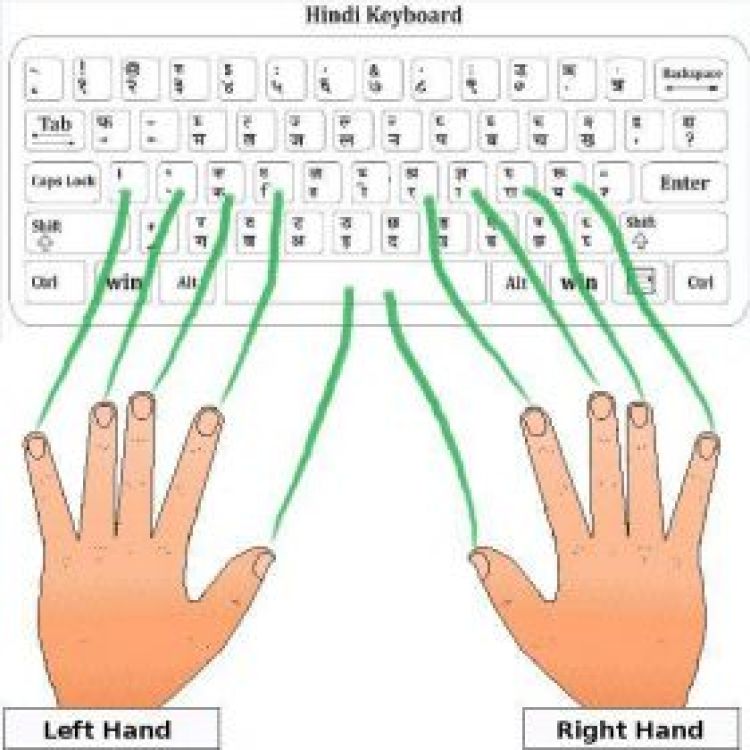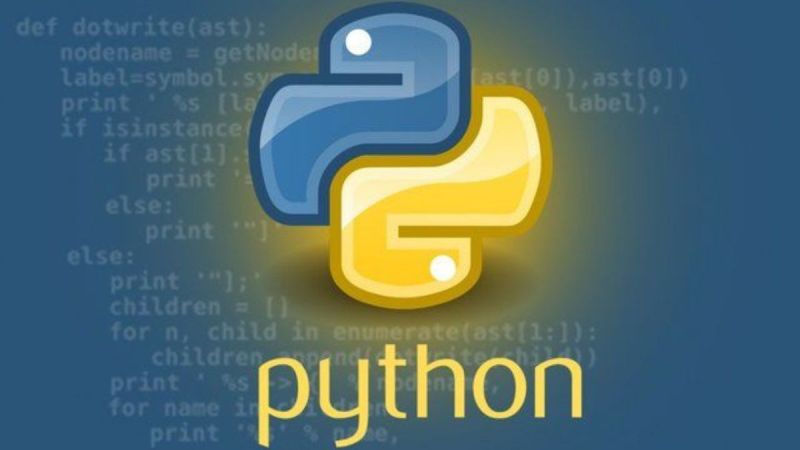
JAVA SCRIPT
.

Course Code : MT0002
Course Duration : 1 YEAR

Course Code : C1001
Course Duration : 2 MONTHS


Course Code : C1181
Course Duration : 2 MONTHS





Course Code : C1007
Course Duration : 3 MONTHS

Course Code : C1008
Course Duration : 3 MONTHS








Course Code : C1016
Course Duration : 3 MONTHS



Course Code : C1019
Course Duration : 3 MONTHS


Course Code : C1021
Course Duration : 3 MONTHS



Course Code : C1024
Course Duration : 3 MONTHS


Course Code : C1026
Course Duration : 3 MONTHS


Course Code : C1028
Course Duration : 3 MONTHS


Course Code : C1030
Course Duration : 3 MONTHS

Course Code : C1031
Course Duration : 3 MONTHS




Course Code : D1035
Course Duration : 12 MONTHS



Course Code : C1038
Course Duration : 2 MONTHS
















Course Code : C1054
Course Duration : 3 MONTHS

Course Code : C1055
Course Duration : 3 MONTHS

Course Code : C1056
Course Duration : 3 MONTHS

Course Code : C1057
Course Duration : 3 MONTHS


Course Code : C1059
Course Duration : 3 MONTHS





Course Code : C1064
Course Duration : 3 MONTHS







Course Code : C1071
Course Duration : 3 MONTHS

Course Code : C1072
Course Duration : 3 MONTHS

Course Code : C1073
Course Duration : 3 MONTHS





Course Code : A1078
Course Duration : 3 MONTHS


Course Code : M1080
Course Duration : 6 MONTHS




Course Code : C1084
Course Duration : 3 MONTHS





Course Code : A1089
Course Duration : 1 YEAR




Course Code : M1093
Course Duration : 6 MONTHS
















Course Code : A1109
Course Duration : 2 MONTHS




Course Code : C1113
Course Duration : 3 MONTHS



Course Code : C1116
Course Duration : 3 MONTHS


Course Code : C1118
Course Duration : 3 MONTHS

Course Code : C1119
Course Duration : 3 MONTHS

Course Code : C1120
Course Duration : 3 MONTHS

Course Code : C1121
Course Duration : 3 MONTHS



Course Code : C1124
Course Duration : 3 MONTHS



Course Code : C1127
Course Duration : 3 MONTHS

Course Code : C1128
Course Duration : 3 MONTHS


Course Code : C1130
Course Duration : 3 MONTHS

Course Code : C1131
Course Duration : 3 MONTHS

Course Code : C1132
Course Duration : 3 MONTHS

Course Code : C1133
Course Duration : 3 MONTHS

Course Code : C1134
Course Duration : 3 MONTHS


Course Code : C1136
Course Duration : 3 MONTHS



Course Code : C1139
Course Duration : 3 MONTHS

Course Code : C1140
Course Duration : 3 MONTHS






Course Code : C1146
Course Duration : 3 MONTHS


Course Code : A1148
Course Duration : 6 MONTHS


Course Code : C1150
Course Duration : 3 MONTHS

Course Code : C1151
Course Duration : 3 MONTHS





Course Code : C1156
Course Duration : 3 MONTHS


Course Code : C1158
Course Duration : 3 MONTHS

Course Code : C1159
Course Duration : 3 MONTHS




Course Code : C1163
Course Duration : 3 MONTHS


Course Code : C1165
Course Duration : 3 MONTHS


Course Code : C1167
Course Duration : 3 MONTHS








Course Code : C1175
Course Duration : 3 MONTHS



Course Code : C1178
Course Duration : 3 MONTHS


Course Code : C1182
Course Duration : 3 MONTHS

Course Code : C1183
Course Duration : 3 MONTHS

Course Code : C1184
Course Duration : 3 MONTHS


Course Code : C1009
Course Duration : 3 MONTHS

Course Code : C1005
Course Duration : 3 MONTHS




Course Code : C1190
Course Duration : 6 MONTHS

Course Code : A1191
Course Duration : 1 YEAR


Course Code : A1192
Course Duration : 12 MONTH






Course Code : C1198
Course Duration : 6 MONTHS



Course Code : C2001
Course Duration : 6 MONTHS





Course Code : C2007
Course Duration : 6 MONTH




Course Code : C2012
Course Duration : 18 MONTHS





Course Code : C2056
Course Duration : 6 MONTHS

Course Code : C2057
Course Duration : 6 MONTHS

Course Code : C2058
Course Duration : 6 MONTHS

Course Code : C2060
Course Duration : 6 MONTHS

Course Code : C2061
Course Duration : 6 MONTHS

Course Code : C2062
Course Duration : 6 MONTHS

Course Code : C2063
Course Duration : 3 MONTHS

Course Code : C2065
Course Duration : 3 MONTHS

Course Code : C2066
Course Duration : 3 MONTHS

Course Code : C2067
Course Duration : 3 MONTHS




Course Code : C2071
Course Duration : 1 YEAR


Course Code : C2073
Course Duration : 1 YEAR



Course Code : C2076
Course Duration : 1 YEAR

Course Code : C2078
Course Duration : 6 MONTHS

Course Code : C2080
Course Duration : 6 MONTHS










Course Code : E-0001
Course Duration : 1 MONTHS

Course Code : C30006
Course Duration : 1 YEAR


Course Code : C4321
Course Duration : 1 YEAR


Course Code : P001
Course Duration : 1 YEAR





Course Code : CC25251
Course Duration : 6 MONTHS


Course Code : C9006
Course Duration : 3 MONTHS


Course Code : C2269
Course Duration : 6 MONTH




Course Code : C4013
Course Duration : 6 MONTHS

Course Code : C4014
Course Duration : 6 MONTHS


Course Code : C20590
Course Duration : 4 MONTHS

Course Code : C60001
Course Duration : 2 MONTHS












Course Code : C11982
Course Duration : 6 MONTHS

Course Code : C200786
Course Duration : 3 MONTH
Course Code : C11289
Course Duration : 3 MONTHS
Course Code : C11290
Course Duration : 6 MONTHS
Course Code : C11089
Course Duration : 6 MONTHS
Course Code : C112599
Course Duration : 9 MONTHS
Course Code : C112000
Course Duration : 15 MONTHS
Course Code : C1120001
Course Duration : 6 MONTHS
Course Code : DC0001
Course Duration : 15 DAY






Course Code : D0017478
Course Duration : 12 MONTHS

Course Code : C12124
Course Duration : 3 MONTHS





Course Code : C4444
Course Duration : 6 MONTHS



Course Code : C092346
Course Duration : 1 MONTH
Course Code : C092350
Course Duration : 1 YEAR
Course Code : C092351
Course Duration : 1 YEAR
Course Code : C092352
Course Duration : 2 YEAR
Course Code : C092353
Course Duration : 2 YEAR
Course Code : C092354
Course Duration : 1 YEAR
Course Code : C092355
Course Duration : 1 YEAR
Course Code : C092356
Course Duration : 1 YEAR
Course Code : C092360
Course Duration : 1 MONTH
Course Code : C092361
Course Duration : 18 MONTHS
Course Code : C092364
Course Duration : 45 DAYS


Course Code : C8954678525
Course Duration : 3 MONTHS
Course Code : C00113321
Course Duration : 6 MONTHS
Course Code : C123217888001
Course Duration : 1 YEAR
Course Code : C0011335656
Course Duration : 1 YEAR
Course Code : C001132023
Course Duration : 7 DAYS
Course Code : C00113377
Course Duration : 6 MONTHS
Course Code : C001133777
Course Duration : 1 YEAR
Course Code : C00113320
Course Duration : 1 YEAR
Course Code : C0011388910145645
Course Duration : 6 MONTH
Course Code : CONTEST-0420
Course Duration : 3 MONTHS
Course Code : C09235155
Course Duration : 6 MONTHS
Course Code : C001132055
Course Duration : 3 MONTHS
Course Code : C0011320565
Course Duration : 3 MONTHS
Course Code : C1011320
Course Duration : 12 MONTHS
Course Code : C001132444
Course Duration : 12 MONTHS
Course Code : C001132212
Course Duration : 1 MONTH
Course Code : C0011346
Course Duration : 6 MONTH
Course Code : C001135555
Course Duration : 3 MONTHS
Course Code : C0011345545
Course Duration : 6 MONTHS
Course Code : C00024
Course Duration : 6 MONTH
Course Code : C0011324532
Course Duration : 1 YEAR
Course Code : C00478965
Course Duration : 3 MONTHS
Course Code : C0011324545
Course Duration : 1 YEAR
Course Code : C001133422
Course Duration : 2 MONTHS
Course Code : C0015432
Course Duration : 6 MONTH
Course Code : C002350
Course Duration : 1 MONTH
Course Code : C001132011
Course Duration : 3 MONTHS
Course Code : CS45321
Course Duration : 7 MONTHS
Course Code : C0011344
Course Duration : 1 YEAR
Course Code : C0011331
Course Duration : 10 MONTH
Course Code : C0011322
Course Duration : 1 YEAR
Course Code : C0011333
Course Duration : 2 MONTHS
Course Code : C0116622
Course Duration : 6 MONTH
Course Code : M017799111
Course Duration : 3 MONTHS
Course Code : C001132112
Course Duration : 3 MONTHS
Course Code : C113211
Course Duration : 1 YEAR
Course Code : MT56044
Course Duration : 3 MONTHS
Course Code : C010111111
Course Duration : 6 MONTHS
Course Code : C032088
Course Duration : 6 MONTH
Course Code : CI32097
Course Duration : 15 MONTH



Course Code : MT0002
Course Duration : 1 YEAR


Course Code : MT0007
Course Duration : 1 YEAR
Course Code : MT52525
Course Duration : 1 YEAR

Course Code : MT1100
Course Duration : 1 YEAR
Course Code : MT0008
Course Duration : 1 YEAR

Course Code : MT102444003
Course Duration : 12 MONTHS
Course Code : MT00123889
Course Duration : 12 MONTHS
Course Code : MT00124770
Course Duration : 6 MONTHS

Course Code : MTMTC013
Course Duration : 18 MONTHS

Course Code : MTMT006457
Course Duration : 6 MONTHS

Course Code : MT5378872
Course Duration : 6 MONTHS

Course Code : MMT673990
Course Duration : 18 MONTHS


Course Code : MTMT44576
Course Duration : 18 MONTHS

Course Code : MTMT773872
Course Duration : 18 MONTHS
Course Code : MT252511
Course Duration : 6 MONTHS
Course Code : MT56002
Course Duration : 6 MONTHS
Course Code : MT562526
Course Duration : 1 YEAR

Course Code : MT634462
Course Duration : 12 MONTHS
Course Code : MT634463
Course Duration : 1 YEAR

Course Code : MT5633385435
Course Duration : 1 YEAR


Course Code : MY67565783
Course Duration : 1 YEAR
Course Code : MTDDCCAA
Course Duration : 6 MONTHS
Course Code : ADCA18M
Course Duration : 18 MONTHS
Course Code : MTITP100
Course Duration : 6 MONTHS
Course Code : MTITP1001
Course Duration : 12 MONTHS
Course Code : MTITP1002
Course Duration : 18 MONTHS
Course Code : MT5600633
Course Duration : 3 MONTHS
Course Code : MT56001
Course Duration : 3 MONTHS
Course Code : MDITSM0001
Course Duration : 18 MONTHS
Course Code : MTC2001
Course Duration : 3 MONTHS
Course Code : MT000488
Course Duration : 1 YEAR
Course Code : MT560028
Course Duration : 6 MONTHS
Course Code : MT5600777
Course Duration : 18 MONTHS
Course Code : MT56003432
Course Duration : 12 MONTHS
Course Code : MT560032221
Course Duration : 1 YEAR

Course Code : MT4598
Course Duration : 1 YEAR
Course Code : MT00756
Course Duration : 1 YEAR
Course Code : MT560999
Course Duration : 1 YEAR
Course Code : MT560666
Course Duration : 1 YEAR
Course Code : MT5600398
Course Duration : 1 YEAR
Course Code : MT560122
Course Duration : 1 MONTH
Course Code : MT560123
Course Duration : 12 MONTH
Course Code : M01248547788
Course Duration : 6 MONTHS
Course Code : MT560078
Course Duration : 3 MONTHS
Course Code : MT2005
Course Duration : 1 YEAR
Course Code : M121212121
Course Duration : 2 MONTHS
Course Code : M1014747
Course Duration : 12 MONTHS
Course Code : M100000111111
Course Duration : 6 MONTHS
Course Code : M44774747474
Course Duration : 3 MONTHS
Course Code : MT00457687
Course Duration : 12 MONTHS
Course Code : 058102
Course Duration : 18 MONTHS
Course Code : MT5607
Course Duration : 16 MONTHS
Course Code : MT56088
Course Duration : 1 YEAR
Course Code : M101777877
Course Duration : 6 MONTHS
Course Code : MT32097
Course Duration : 18 MONTHS



Course Code : MT0002
Course Duration : 1 YEAR


Course Code : C2078
Course Duration : 6 MONTHS



Course Code : C2076
Course Duration : 1 YEAR
Course Code : MT634463
Course Duration : 1 YEAR

Course Code : C2078
Course Duration : 6 MONTHS



Course Code : C2078
Course Duration : 6 MONTHS

Course Code : C2062
Course Duration : 6 MONTHS

Course Code : C1072
Course Duration : 3 MONTHS

Course Code : MT634463
Course Duration : 1 YEAR

Course Code : C8954678525
Course Duration : 3 MONTHS


Course Code : P001
Course Duration : 1 YEAR

Course Code : MT0002
Course Duration : 1 YEAR




Course Code : C1071
Course Duration : 3 MONTHS


Course Code : A1191
Course Duration : 1 YEAR


Course Code : C0011322
Course Duration : 1 YEAR


Course Code : MT56044
Course Duration : 3 MONTHS


Course Code : C1167
Course Duration : 3 MONTHS

Course Code : C1150
Course Duration : 3 MONTHS

Course Code : C1007
Course Duration : 3 MONTHS

Course Code : C2071
Course Duration : 1 YEAR

Course Code : C092350
Course Duration : 1 YEAR
Course Code : C092351
Course Duration : 1 YEAR
Course Code : C092352
Course Duration : 2 YEAR
Course Code : C092353
Course Duration : 2 YEAR
Course Code : C092354
Course Duration : 1 YEAR
Course Code : C092355
Course Duration : 1 YEAR


Course Code : D1035
Course Duration : 12 MONTHS

Course Code : C032088
Course Duration : 6 MONTH








Course Code : MT52525
Course Duration : 1 YEAR
Course Code : C0116622
Course Duration : 6 MONTH


Course Code : A1191
Course Duration : 1 YEAR

Course Code : A1191
Course Duration : 1 YEAR
Course Code : MTC2001
Course Duration : 3 MONTHS
Course Code : MT0007
Course Duration : 1 YEAR



Course Code : C2073
Course Duration : 1 YEAR


Course Code : A1191
Course Duration : 1 YEAR

Course Code : C4444
Course Duration : 6 MONTHS



Course Code : C2078
Course Duration : 6 MONTHS

Course Code : C2073
Course Duration : 1 YEAR




Course Code : C9006
Course Duration : 3 MONTHS

Course Code : C11289
Course Duration : 3 MONTHS
Course Code : C11290
Course Duration : 6 MONTHS
Course Code : C0116622
Course Duration : 6 MONTH

Course Code : C2076
Course Duration : 1 YEAR


Course Code : C1198
Course Duration : 6 MONTHS

Course Code : MT102444003
Course Duration : 12 MONTHS

Course Code : MTMTC013
Course Duration : 18 MONTHS

Course Code : MT0002
Course Duration : 1 YEAR

Course Code : MMT673990
Course Duration : 18 MONTHS


Course Code : MTMT44576
Course Duration : 18 MONTHS

Course Code : MTMT773872
Course Duration : 18 MONTHS

Course Code : MT252511
Course Duration : 6 MONTHS
Course Code : MT56002
Course Duration : 6 MONTHS
Course Code : MT5600633
Course Duration : 3 MONTHS

Course Code : MTMT006457
Course Duration : 6 MONTHS




Course Code : MT0002
Course Duration : 1 YEAR
Course Code : MT560123
Course Duration : 12 MONTH
Course Code : MT0007
Course Duration : 1 YEAR
Course Code : MT52525
Course Duration : 1 YEAR

Course Code : MT1100
Course Duration : 1 YEAR
Course Code : MT00123889
Course Duration : 12 MONTHS
Course Code : MT00124770
Course Duration : 6 MONTHS
Course Code : MT560999
Course Duration : 1 YEAR
Course Code : MT560666
Course Duration : 1 YEAR
Course Code : MT560122
Course Duration : 1 MONTH

Course Code : MT634462
Course Duration : 12 MONTHS
Course Code : MT634463
Course Duration : 1 YEAR
Course Code : MT56003432
Course Duration : 12 MONTHS
Course Code : MTDDCCAA
Course Duration : 6 MONTHS
Course Code : MTITP100
Course Duration : 6 MONTHS
Course Code : MTITP1001
Course Duration : 12 MONTHS

Course Code : A1191
Course Duration : 1 YEAR


Course Code : CC25251
Course Duration : 6 MONTHS


Course Code : MT0002
Course Duration : 1 YEAR

Course Code : C2078
Course Duration : 6 MONTHS



Course Code : MT1100
Course Duration : 1 YEAR
Course Code : M-001134
Course Duration : 3 MONTHS

Course Code : MT0002
Course Duration : 1 YEAR

Course Code : MT5600777
Course Duration : 18 MONTHS

Course Code : CC25251
Course Duration : 6 MONTHS

Course Code : MT1100
Course Duration : 1 YEAR
Course Code : MT634463
Course Duration : 1 YEAR
Course Code : MT56001
Course Duration : 3 MONTHS
Course Code : M-001134
Course Duration : 3 MONTHS

Course Code : MT1100
Course Duration : 1 YEAR

Course Code : C092361
Course Duration : 18 MONTHS

Course Code : MTC2001
Course Duration : 3 MONTHS
Course Code : MT00756
Course Duration : 1 YEAR
Course Code : MT560078
Course Duration : 3 MONTHS
Course Code : MT2005
Course Duration : 1 YEAR


Course Code : MT0002
Course Duration : 1 YEAR


Course Code : C8954678525
Course Duration : 3 MONTHS

Course Code : C1007
Course Duration : 3 MONTHS

Course Code : C1007
Course Duration : 3 MONTHS

Course Code : C1007
Course Duration : 3 MONTHS

Course Code : C1007
Course Duration : 3 MONTHS

Course Code : A1191
Course Duration : 1 YEAR

Course Code : MT1100
Course Duration : 1 YEAR




Course Code : A1191
Course Duration : 1 YEAR

Course Code : A1191
Course Duration : 1 YEAR


Course Code : MT0002
Course Duration : 1 YEAR
Course Code : M-MT5606767
Course Duration : 12 MONTHS

Course Code : MT0002
Course Duration : 1 YEAR




Course Code : MT52525
Course Duration : 1 YEAR

Course Code : MT0002
Course Duration : 1 YEAR
Course Code : MT560123
Course Duration : 12 MONTH

Course Code : C2063
Course Duration : 3 MONTHS

Course Code : C2062
Course Duration : 6 MONTHS

Course Code : C2061
Course Duration : 6 MONTHS

Course Code : C2060
Course Duration : 6 MONTHS

Course Code : C2058
Course Duration : 6 MONTHS

Course Code : C2057
Course Duration : 6 MONTHS

Course Code : C2056
Course Duration : 6 MONTHS

Course Code : C1167
Course Duration : 3 MONTHS

Course Code : C1150
Course Duration : 3 MONTHS

Course Code : C1007
Course Duration : 3 MONTHS

Course Code : C1007
Course Duration : 3 MONTHS



Course Code : C2078
Course Duration : 6 MONTHS


Course Code : MT0002
Course Duration : 1 YEAR
Course Code : MT52525
Course Duration : 1 YEAR


Course Code : A1191
Course Duration : 1 YEAR

Course Code : MT0002
Course Duration : 1 YEAR

Course Code : C2073
Course Duration : 1 YEAR


Course Code : MTMTC013
Course Duration : 18 MONTHS

Course Code : MT0002
Course Duration : 1 YEAR

Course Code : MTMT006457
Course Duration : 6 MONTHS
Course Code : MTDDCCAA
Course Duration : 6 MONTHS
Course Code : MT5600633
Course Duration : 3 MONTHS
Course Code : MT5600777
Course Duration : 18 MONTHS
Course Code : MT52525
Course Duration : 1 YEAR

Course Code : MT1100
Course Duration : 1 YEAR
Course Code : MT5600398
Course Duration : 1 YEAR
Course Code : MT5600633
Course Duration : 3 MONTHS

Course Code : C2078
Course Duration : 6 MONTHS


Course Code : C2060
Course Duration : 6 MONTHS


Course Code : A1191
Course Duration : 1 YEAR


Course Code : C1005
Course Duration : 3 MONTHS

Course Code : C2060
Course Duration : 6 MONTHS

Course Code : D1035
Course Duration : 12 MONTHS


Course Code : C1007
Course Duration : 3 MONTHS

Course Code : C1071
Course Duration : 3 MONTHS



Course Code : MT0002
Course Duration : 1 YEAR
Course Code : MT4598
Course Duration : 1 YEAR
Course Code : MT560078
Course Duration : 3 MONTHS

Course Code : C2060
Course Duration : 6 MONTHS

Course Code : C2076
Course Duration : 1 YEAR

Course Code : C2078
Course Duration : 6 MONTHS

Course Code : C1131
Course Duration : 3 MONTHS

Course Code : C2057
Course Duration : 6 MONTHS



Course Code : C1167
Course Duration : 3 MONTHS

Course Code : C1007
Course Duration : 3 MONTHS


Course Code : MTMT773872
Course Duration : 18 MONTHS

Course Code : P001
Course Duration : 1 YEAR

Course Code : A1191
Course Duration : 1 YEAR


Course Code : C8954678525
Course Duration : 3 MONTHS

Course Code : C8954678525
Course Duration : 3 MONTHS
Course Code : C0011388910145645
Course Duration : 6 MONTH



Course Code : C001133777
Course Duration : 1 YEAR

Course Code : CC25251
Course Duration : 6 MONTHS
Course Code : M-MT5606767
Course Duration : 12 MONTHS

Course Code : MT0002
Course Duration : 1 YEAR
Course Code : C001132444
Course Duration : 12 MONTHS

Course Code : C2076
Course Duration : 1 YEAR


Course Code : C1190
Course Duration : 6 MONTHS


Course Code : C4321
Course Duration : 1 YEAR

Course Code : C4444
Course Duration : 6 MONTHS

Course Code : P001
Course Duration : 1 YEAR
Course Code : CI32097
Course Duration : 15 MONTH

Course Code : A1191
Course Duration : 1 YEAR

Course Code : MT0002
Course Duration : 1 YEAR

Course Code : C1119
Course Duration : 3 MONTHS

Course Code : MT0002
Course Duration : 1 YEAR


Course Code : C1005
Course Duration : 3 MONTHS


Course Code : MT0002
Course Duration : 1 YEAR

Course Code : C1005
Course Duration : 3 MONTHS



Course Code : A1191
Course Duration : 1 YEAR

Course Code : D1035
Course Duration : 12 MONTHS

Course Code : D1035
Course Duration : 12 MONTHS


Course Code : C112599
Course Duration : 9 MONTHS

Course Code : MT0002
Course Duration : 1 YEAR




Course Code : C1007
Course Duration : 3 MONTHS

Course Code : C1072
Course Duration : 3 MONTHS

Course Code : MT0002
Course Duration : 1 YEAR


Course Code : MT0002
Course Duration : 1 YEAR

Course Code : MT0002
Course Duration : 1 YEAR

Course Code : MT0002
Course Duration : 1 YEAR



Course Code : C2001
Course Duration : 6 MONTHS



Course Code : C2078
Course Duration : 6 MONTHS

Course Code : A1191
Course Duration : 1 YEAR



Course Code : C1009
Course Duration : 3 MONTHS



Course Code : C1146
Course Duration : 3 MONTHS


Course Code : C2057
Course Duration : 6 MONTHS
Course Code : C0015432
Course Duration : 6 MONTH

Course Code : C8954678525
Course Duration : 3 MONTHS


Course Code : C12124
Course Duration : 3 MONTHS
Course Code : MT634463
Course Duration : 1 YEAR



Course Code : MT0002
Course Duration : 1 YEAR

Course Code : C0011346
Course Duration : 6 MONTH

Course Code : C2057
Course Duration : 6 MONTHS


Course Code : MT0002
Course Duration : 1 YEAR

Course Code : MT0002
Course Duration : 1 YEAR

Course Code : C2012
Course Duration : 18 MONTHS

Course Code : MTMTC013
Course Duration : 18 MONTHS

Course Code : MT1100
Course Duration : 1 YEAR



Course Code : C0011345545
Course Duration : 6 MONTHS
Course Code : C0116622
Course Duration : 6 MONTH

Course Code : MT1100
Course Duration : 1 YEAR
Course Code : MT00124770
Course Duration : 6 MONTHS

Course Code : MTMT006457
Course Duration : 6 MONTHS

Course Code : MT0002
Course Duration : 1 YEAR
Course Code : MT5600633
Course Duration : 3 MONTHS
Course Code : MT2005
Course Duration : 1 YEAR
Course Code : MT0007
Course Duration : 1 YEAR
Course Code : MT252511
Course Duration : 6 MONTHS
Course Code : MT56002
Course Duration : 6 MONTHS


Course Code : P001
Course Duration : 1 YEAR



Course Code : C2269
Course Duration : 6 MONTH
Course Code : MT56001
Course Duration : 3 MONTHS



Course Code : A1191
Course Duration : 1 YEAR

Course Code : C1005
Course Duration : 3 MONTHS


Course Code : MT0002
Course Duration : 1 YEAR


Course Code : C1167
Course Duration : 3 MONTHS

Course Code : C1071
Course Duration : 3 MONTHS


Course Code : P001
Course Duration : 1 YEAR



Course Code : C8954678525
Course Duration : 3 MONTHS

Course Code : MDITSM0001
Course Duration : 18 MONTHS


Course Code : MT1100
Course Duration : 1 YEAR

Course Code : MT0002
Course Duration : 1 YEAR


Course Code : C112599
Course Duration : 9 MONTHS

Course Code : C1150
Course Duration : 3 MONTHS

Course Code : C1071
Course Duration : 3 MONTHS

Course Code : C1071
Course Duration : 3 MONTHS
Course Code : MT0007
Course Duration : 1 YEAR
Course Code : MTC2001
Course Duration : 3 MONTHS





Course Code : A1191
Course Duration : 1 YEAR




Course Code : MT0002
Course Duration : 1 YEAR
Course Code : MTDDCCAA
Course Duration : 6 MONTHS




Course Code : C2065
Course Duration : 3 MONTHS

Course Code : C2063
Course Duration : 3 MONTHS

Course Code : C2060
Course Duration : 6 MONTHS

Course Code : C2058
Course Duration : 6 MONTHS

Course Code : C1071
Course Duration : 3 MONTHS
Course Code : C0011346
Course Duration : 6 MONTH
Course Code : C00024
Course Duration : 6 MONTH
Course Code : C010111111
Course Duration : 6 MONTHS

Course Code : C1073
Course Duration : 3 MONTHS

Course Code : C1072
Course Duration : 3 MONTHS

Course Code : C1007
Course Duration : 3 MONTHS

Course Code : C1071
Course Duration : 3 MONTHS

Course Code : MT1100
Course Duration : 1 YEAR




Course Code : MT0002
Course Duration : 1 YEAR

Course Code : C1073
Course Duration : 3 MONTHS

Course Code : C1072
Course Duration : 3 MONTHS

Course Code : C1007
Course Duration : 3 MONTHS

Course Code : C1071
Course Duration : 3 MONTHS
Course Code : MT00123889
Course Duration : 12 MONTHS

Course Code : MT0002
Course Duration : 1 YEAR


Course Code : MT0002
Course Duration : 1 YEAR


Course Code : MT0002
Course Duration : 1 YEAR
Course Code : MT0007
Course Duration : 1 YEAR


Course Code : C2076
Course Duration : 1 YEAR
Course Code : MT52525
Course Duration : 1 YEAR

Course Code : MT1100
Course Duration : 1 YEAR

Course Code : C00212
Course Duration : 3 MONTHS 120 HOURS
Course Code : C00212
Course Duration : 3 MONTHS 120 HOURS


Course Code : C00212
Course Duration : 3 MONTHS 120 HOURS


Course Code : M-MT560055
Course Duration : 3 MONTHS 120 HOURS

Course Code : MT634462
Course Duration : 12 MONTHS





Course Code : MT52525
Course Duration : 1 YEAR

Course Code : C8954678525
Course Duration : 3 MONTHS


Course Code : M-MT560055
Course Duration : 3 MONTHS 120 HOURS
Course Code : M-MT560055
Course Duration : 3 MONTHS 120 HOURS

Course Code : MT1100
Course Duration : 1 YEAR

Course Code : MT00124770
Course Duration : 6 MONTHS

Course Code : MT0002
Course Duration : 1 YEAR
Course Code : MT560078
Course Duration : 3 MONTHS


Course Code : MT0002
Course Duration : 1 YEAR















Course Code : C1184
Course Duration : 3 MONTHS


Course Code : C1007
Course Duration : 3 MONTHS

Course Code : C1072
Course Duration : 3 MONTHS

Course Code : C1073
Course Duration : 3 MONTHS

Course Code : C1071
Course Duration : 3 MONTHS




Course Code : MT0002
Course Duration : 1 YEAR

Course Code : C8954678525
Course Duration : 3 MONTHS

Course Code : MT560032221
Course Duration : 1 YEAR

Course Code : C1119
Course Duration : 3 MONTHS

Course Code : MT252511
Course Duration : 6 MONTHS

Course Code : MT0002
Course Duration : 1 YEAR
Course Code : MT52525
Course Duration : 1 YEAR

Course Code : MT1100
Course Duration : 1 YEAR

Course Code : C12124
Course Duration : 3 MONTHS

Course Code : C1190
Course Duration : 6 MONTHS


Course Code : P001
Course Duration : 1 YEAR

Course Code : A1191
Course Duration : 1 YEAR


Course Code : MT52525
Course Duration : 1 YEAR

Course Code : C1005
Course Duration : 3 MONTHS

Course Code : C1007
Course Duration : 3 MONTHS

Course Code : A1191
Course Duration : 1 YEAR

Course Code : MT0002
Course Duration : 1 YEAR
Course Code : MT5607
Course Duration : 16 MONTHS

Course Code : C8954678525
Course Duration : 3 MONTHS

Course Code : MT102444003
Course Duration : 12 MONTHS
Course Code : MT634463
Course Duration : 1 YEAR
Course Code : MT00124770
Course Duration : 6 MONTHS
Course Code : MT0007
Course Duration : 1 YEAR

Course Code : MT1100
Course Duration : 1 YEAR
Course Code : MT252511
Course Duration : 6 MONTHS


Course Code : MT0002
Course Duration : 1 YEAR
Course Code : C00212
Course Duration : 3 MONTHS 120 HOURS


Course Code : MT0002
Course Duration : 1 YEAR

Course Code : A1191
Course Duration : 1 YEAR


Course Code : C00212
Course Duration : 3 MONTHS 120 HOURS
Course Code : C00212
Course Duration : 3 MONTHS 120 HOURS

Course Code : A1191
Course Duration : 1 YEAR




Course Code : C8954678525
Course Duration : 3 MONTHS



Course Code : MT0002
Course Duration : 1 YEAR

Course Code : MT0002
Course Duration : 1 YEAR
Course Code : C001133777
Course Duration : 1 YEAR

Course Code : C2076
Course Duration : 1 YEAR


Course Code : A1191
Course Duration : 1 YEAR



Course Code : S-C00277
Course Duration : 6 MONTH




Course Code : MT1100
Course Duration : 1 YEAR

Course Code : MT0002
Course Duration : 1 YEAR

Course Code : C1119
Course Duration : 3 MONTHS


Course Code : C2078
Course Duration : 6 MONTHS

Course Code : C2076
Course Duration : 1 YEAR






Course Code : C2073
Course Duration : 1 YEAR


Course Code : C2071
Course Duration : 1 YEAR




Course Code : C1121
Course Duration : 3 MONTHS

Course Code : C1119
Course Duration : 3 MONTHS

Course Code : A1191
Course Duration : 1 YEAR

Course Code : C2060
Course Duration : 6 MONTHS




Course Code : C1167
Course Duration : 3 MONTHS


Course Code : C2001
Course Duration : 6 MONTHS




Course Code : C1150
Course Duration : 3 MONTHS









Course Code : C12124
Course Duration : 3 MONTHS




Course Code : P001
Course Duration : 1 YEAR


Course Code : A1191
Course Duration : 1 YEAR



Course Code : P001
Course Duration : 1 YEAR

Course Code : A1191
Course Duration : 1 YEAR


Course Code : A1191
Course Duration : 1 YEAR

Course Code : C20590
Course Duration : 4 MONTHS

Course Code : A1089
Course Duration : 1 YEAR




Course Code : MT56003432
Course Duration : 12 MONTHS


Course Code : C1119
Course Duration : 3 MONTHS




Course Code : MT1100
Course Duration : 1 YEAR



Course Code : C1001
Course Duration : 2 MONTHS




Course Code : C0116622
Course Duration : 6 MONTH


Course Code : A1191
Course Duration : 1 YEAR

Course Code : MT0002
Course Duration : 1 YEAR

Course Code : MT0002
Course Duration : 1 YEAR

Course Code : MT0002
Course Duration : 1 YEAR

Course Code : MT0002
Course Duration : 1 YEAR


Course Code : MT0002
Course Duration : 1 YEAR

Course Code : C1190
Course Duration : 6 MONTHS
Course Code : M-MT2525PG
Course Duration : 18 MONTH

Course Code : MT1100
Course Duration : 1 YEAR
Course Code : MT252511
Course Duration : 6 MONTHS
Course Code : M-MT2525PG
Course Duration : 18 MONTH

Course Code : MT0002
Course Duration : 1 YEAR

Course Code : MT1100
Course Duration : 1 YEAR
Course Code : MT000488
Course Duration : 1 YEAR


Course Code : MT0002
Course Duration : 1 YEAR

Course Code : P001
Course Duration : 1 YEAR


Course Code : C2078
Course Duration : 6 MONTHS

Course Code : C2076
Course Duration : 1 YEAR



Course Code : C2060
Course Duration : 6 MONTHS

Course Code : C2060
Course Duration : 6 MONTHS


Course Code : A1191
Course Duration : 1 YEAR

Course Code : C1190
Course Duration : 6 MONTHS


Course Code : C4444
Course Duration : 6 MONTHS
Course Code : CI32097
Course Duration : 15 MONTH


Course Code : C2060
Course Duration : 6 MONTHS

Course Code : C2058
Course Duration : 6 MONTHS







Course Code : MT0002
Course Duration : 1 YEAR




Course Code : C1007
Course Duration : 3 MONTHS








Course Code : MT0002
Course Duration : 1 YEAR

Course Code : MT252511
Course Duration : 6 MONTHS
Course Code : MTC2001
Course Duration : 3 MONTHS
Course Code : M-MT2525PG
Course Duration : 18 MONTH

Course Code : MT1100
Course Duration : 1 YEAR
Course Code : MT4598
Course Duration : 1 YEAR
Course Code : MT4598
Course Duration : 1 YEAR

Course Code : MT1100
Course Duration : 1 YEAR

Course Code : MT0002
Course Duration : 1 YEAR

Course Code : P001
Course Duration : 1 YEAR

Course Code : A1191
Course Duration : 1 YEAR

Course Code : MT634462
Course Duration : 12 MONTHS

Course Code : MT634462
Course Duration : 12 MONTHS

Course Code : MT634462
Course Duration : 12 MONTHS

Course Code : C2058
Course Duration : 6 MONTHS

Course Code : C2057
Course Duration : 6 MONTHS

Course Code : CC25251
Course Duration : 6 MONTHS




Course Code : A1191
Course Duration : 1 YEAR


Course Code : P001
Course Duration : 1 YEAR

Course Code : P001
Course Duration : 1 YEAR


Course Code : MT1100
Course Duration : 1 YEAR
Course Code : MT00124770
Course Duration : 6 MONTHS

Course Code : A1191
Course Duration : 1 YEAR


Course Code : P001
Course Duration : 1 YEAR
Course Code : MT00124770
Course Duration : 6 MONTHS

Course Code : M-M47474401101
Course Duration : 6 MONTHS

Course Code : C1072
Course Duration : 3 MONTHS

Course Code : A1191
Course Duration : 1 YEAR

Course Code : C2076
Course Duration : 1 YEAR


Course Code : A1191
Course Duration : 1 YEAR
Course Code : C112599
Course Duration : 9 MONTHS

Course Code : P001
Course Duration : 1 YEAR
Course Code : MT634463
Course Duration : 1 YEAR
Course Code : MT5600633
Course Duration : 3 MONTHS
Course Code : MT560078
Course Duration : 3 MONTHS

Course Code : MT0002
Course Duration : 1 YEAR
Course Code : M-BLEDING0113
Course Duration : 1 MONTH

Course Code : A1191
Course Duration : 1 YEAR

Course Code : C4444
Course Duration : 6 MONTHS

Course Code : MT0002
Course Duration : 1 YEAR

Course Code : MT0002
Course Duration : 1 YEAR



Course Code : C00212
Course Duration : 3 MONTHS 120 HOURS


Course Code : A1191
Course Duration : 1 YEAR
Course Code : C0011345545
Course Duration : 6 MONTHS
Course Code : C0116622
Course Duration : 6 MONTH
Course Code : MT00123889
Course Duration : 12 MONTHS
Course Code : MT634463
Course Duration : 1 YEAR

Course Code : MT0002
Course Duration : 1 YEAR

Course Code : MT1100
Course Duration : 1 YEAR

Course Code : MT2005
Course Duration : 1 YEAR

Course Code : C2076
Course Duration : 1 YEAR

Course Code : MT0002
Course Duration : 1 YEAR

Course Code : P001
Course Duration : 1 YEAR

Course Code : C2076
Course Duration : 1 YEAR


Course Code : C8954678525
Course Duration : 3 MONTHS

Course Code : C1001
Course Duration : 2 MONTHS

Course Code : MT5600633
Course Duration : 3 MONTHS
Course Code : MT0007
Course Duration : 1 YEAR
Course Code : MT56003432
Course Duration : 12 MONTHS


Course Code : MT1100
Course Duration : 1 YEAR

Course Code : MT0002
Course Duration : 1 YEAR


Course Code : A1191
Course Duration : 1 YEAR

Course Code : C1119
Course Duration : 3 MONTHS





Course Code : C1005
Course Duration : 3 MONTHS


Course Code : MT1100
Course Duration : 1 YEAR



Course Code : C1131
Course Duration : 3 MONTHS









Course Code : A1191
Course Duration : 1 YEAR

Course Code : P001
Course Duration : 1 YEAR

Course Code : P001
Course Duration : 1 YEAR

Course Code : P001
Course Duration : 1 YEAR

Course Code : MT0002
Course Duration : 1 YEAR

Course Code : MTMTC013
Course Duration : 18 MONTHS
Course Code : M-MT2525PG
Course Duration : 18 MONTH


Course Code : A1191
Course Duration : 1 YEAR



Course Code : C1119
Course Duration : 3 MONTHS

Course Code : C1119
Course Duration : 3 MONTHS


Course Code : A1191
Course Duration : 1 YEAR




Course Code : MT634463
Course Duration : 1 YEAR

Course Code : MT1100
Course Duration : 1 YEAR

Course Code : P001
Course Duration : 1 YEAR
Course Code : MT2005
Course Duration : 1 YEAR


Course Code : C1119
Course Duration : 3 MONTHS

Course Code : CC25251
Course Duration : 6 MONTHS

Course Code : C8954678525
Course Duration : 3 MONTHS

Course Code : C12124
Course Duration : 3 MONTHS

Course Code : C1001
Course Duration : 2 MONTHS


Course Code : C8954678525
Course Duration : 3 MONTHS
Course Code : MT634463
Course Duration : 1 YEAR
Course Code : MT560032221
Course Duration : 1 YEAR



Course Code : MT1100
Course Duration : 1 YEAR

Course Code : MT0002
Course Duration : 1 YEAR
Course Code : M-M401011
Course Duration : 15 MONTHS

Course Code : M-M747777444
Course Duration : 12 MONTHS
Course Code : M-BLEDING0113
Course Duration : 1 MONTH


Course Code : C2076
Course Duration : 1 YEAR

Course Code : C2071
Course Duration : 1 YEAR

Course Code : C2067
Course Duration : 3 MONTHS

Course Code : C001132112
Course Duration : 3 MONTHS
Course Code : M-MT2525PG
Course Duration : 18 MONTH



Course Code : P001
Course Duration : 1 YEAR

Course Code : A1191
Course Duration : 1 YEAR




Course Code : C1005
Course Duration : 3 MONTHS



Course Code : MT1100
Course Duration : 1 YEAR

Course Code : M-MT560055
Course Duration : 3 MONTHS 120 HOURS

Course Code : A1191
Course Duration : 1 YEAR



Course Code : C1119
Course Duration : 3 MONTHS

Course Code : C1119
Course Duration : 3 MONTHS






Course Code : C1167
Course Duration : 3 MONTHS

Course Code : MT634463
Course Duration : 1 YEAR


Course Code : A1089
Course Duration : 1 YEAR

Course Code : A1191
Course Duration : 1 YEAR

Course Code : C1150
Course Duration : 3 MONTHS

Course Code : C1009
Course Duration : 3 MONTHS



Course Code : C1146
Course Duration : 3 MONTHS





Course Code : C1064
Course Duration : 3 MONTHS




Course Code : C2080
Course Duration : 6 MONTHS

Course Code : C2269
Course Duration : 6 MONTH



Course Code : C00113321
Course Duration : 6 MONTHS
Course Code : C0015432
Course Duration : 6 MONTH

Course Code : MT000488
Course Duration : 1 YEAR





Course Code : MT0002
Course Duration : 1 YEAR





Course Code : C0116622
Course Duration : 6 MONTH


Course Code : C1071
Course Duration : 3 MONTHS

Course Code : C1167
Course Duration : 3 MONTHS

Course Code : C2001
Course Duration : 6 MONTHS

Course Code : C1008
Course Duration : 3 MONTHS



Course Code : C4013
Course Duration : 6 MONTHS

Course Code : MT562526
Course Duration : 1 YEAR

Course Code : C2076
Course Duration : 1 YEAR

Course Code : MT1100
Course Duration : 1 YEAR






Course Code : MT0002
Course Duration : 1 YEAR
Course Code : MT634463
Course Duration : 1 YEAR




Course Code : C1119
Course Duration : 3 MONTHS

Course Code : MT0002
Course Duration : 1 YEAR

Course Code : MT0002
Course Duration : 1 YEAR


Course Code : C1007
Course Duration : 3 MONTHS

Course Code : C1072
Course Duration : 3 MONTHS

Course Code : MT1100
Course Duration : 1 YEAR

Course Code : MT0002
Course Duration : 1 YEAR

Course Code : C2001
Course Duration : 6 MONTHS
Course Code : MT2005
Course Duration : 1 YEAR

Course Code : MT0002
Course Duration : 1 YEAR


Course Code : A1191
Course Duration : 1 YEAR

Course Code : MT0002
Course Duration : 1 YEAR


Course Code : MT0002
Course Duration : 1 YEAR




Course Code : MT0002
Course Duration : 1 YEAR


Course Code : MT1100
Course Duration : 1 YEAR

Course Code : MT0002
Course Duration : 1 YEAR
Course Code : MTC2001
Course Duration : 3 MONTHS

Course Code : C2071
Course Duration : 1 YEAR
Course Code : MT560999
Course Duration : 1 YEAR

Course Code : C1071
Course Duration : 3 MONTHS

Course Code : MT0002
Course Duration : 1 YEAR

Course Code : C1007
Course Duration : 3 MONTHS

Course Code : C1150
Course Duration : 3 MONTHS


Course Code : MT1100
Course Duration : 1 YEAR

Course Code : MT0002
Course Duration : 1 YEAR

Course Code : C1167
Course Duration : 3 MONTHS

Course Code : C1007
Course Duration : 3 MONTHS

Course Code : MT0002
Course Duration : 1 YEAR





Course Code : C092356
Course Duration : 1 YEAR

Course Code : C1119
Course Duration : 3 MONTHS





Course Code : MT2005
Course Duration : 1 YEAR

Course Code : MT0002
Course Duration : 1 YEAR


Course Code : MT0002
Course Duration : 1 YEAR


Course Code : A1191
Course Duration : 1 YEAR
Course Code : C00024
Course Duration : 6 MONTH
Course Code : C092361
Course Duration : 18 MONTHS

Course Code : C2056
Course Duration : 6 MONTHS



Course Code : A1191
Course Duration : 1 YEAR



Course Code : MT1100
Course Duration : 1 YEAR

Course Code : MT0002
Course Duration : 1 YEAR

Course Code : MT0002
Course Duration : 1 YEAR

Course Code : MT0002
Course Duration : 1 YEAR

Course Code : MT0002
Course Duration : 1 YEAR

Course Code : D0017478
Course Duration : 12 MONTHS
Course Code : C092360
Course Duration : 1 MONTH


Course Code : C2078
Course Duration : 6 MONTHS

Course Code : C2073
Course Duration : 1 YEAR

Course Code : C1119
Course Duration : 3 MONTHS

Course Code : C2007
Course Duration : 6 MONTH


Course Code : C2001
Course Duration : 6 MONTHS





Course Code : C1005
Course Duration : 3 MONTHS


Course Code : C1008
Course Duration : 3 MONTHS
Course Code : C112599
Course Duration : 9 MONTHS


Course Code : C8954678525
Course Duration : 3 MONTHS
Course Code : MT5600633
Course Duration : 3 MONTHS
Course Code : M-MT2525PG
Course Duration : 18 MONTH

Course Code : MT0002
Course Duration : 1 YEAR




Course Code : C2060
Course Duration : 6 MONTHS

Course Code : C2057
Course Duration : 6 MONTHS

Course Code : C2056
Course Duration : 6 MONTHS

Course Code : C1167
Course Duration : 3 MONTHS

Course Code : C1150
Course Duration : 3 MONTHS
Course Code : C092346
Course Duration : 1 MONTH



Course Code : C2078
Course Duration : 6 MONTHS

Course Code : C2073
Course Duration : 1 YEAR





Course Code : MT0002
Course Duration : 1 YEAR

Course Code : MT0002
Course Duration : 1 YEAR



Course Code : C1071
Course Duration : 3 MONTHS


Course Code : C00024
Course Duration : 6 MONTH





Course Code : MT1100
Course Duration : 1 YEAR
Course Code : MT00124770
Course Duration : 6 MONTHS



Course Code : C1150
Course Duration : 3 MONTHS

Course Code : C1007
Course Duration : 3 MONTHS



Course Code : C8954678525
Course Duration : 3 MONTHS

Course Code : S-S-C00298
Course Duration : 6 MONTH

Course Code : S-S-C00298
Course Duration : 6 MONTH

Course Code : C8954678525
Course Duration : 3 MONTHS

Course Code : A1191
Course Duration : 1 YEAR

Course Code : P001
Course Duration : 1 YEAR




Course Code : MT0002
Course Duration : 1 YEAR

Course Code : C1005
Course Duration : 3 MONTHS


Course Code : MT0002
Course Duration : 1 YEAR

Course Code : C1119
Course Duration : 3 MONTHS

Course Code : C1119
Course Duration : 3 MONTHS
Course Code : MTDDCCAA
Course Duration : 6 MONTHS
Course Code : M-M-M749966
Course Duration : 6 MONTH

Course Code : MT1100
Course Duration : 1 YEAR

Course Code : MT0002
Course Duration : 1 YEAR

Course Code : MT0002
Course Duration : 1 YEAR

Course Code : MT0002
Course Duration : 1 YEAR
Course Code : M-M401011
Course Duration : 15 MONTHS
Course Code : MT252511
Course Duration : 6 MONTHS
Course Code : M-M747777444
Course Duration : 12 MONTHS
Course Code : M-M747777444
Course Duration : 12 MONTHS

Course Code : M-M-M749966
Course Duration : 6 MONTH

Course Code : MT00123889
Course Duration : 12 MONTHS
Course Code : MT560078
Course Duration : 3 MONTHS

Course Code : S-S-C00298
Course Duration : 6 MONTH



Course Code : C1190
Course Duration : 6 MONTHS

Course Code : P001
Course Duration : 1 YEAR

Course Code : A1191
Course Duration : 1 YEAR

Course Code : MT0002
Course Duration : 1 YEAR


Course Code : A1191
Course Duration : 1 YEAR

Course Code : A1191
Course Duration : 1 YEAR

Course Code : C1119
Course Duration : 3 MONTHS

Course Code : C1190
Course Duration : 6 MONTHS

Course Code : MT1100
Course Duration : 1 YEAR

Course Code : MT0002
Course Duration : 1 YEAR

Course Code : MTMTC013
Course Duration : 18 MONTHS
Course Code : MT56001
Course Duration : 3 MONTHS


Course Code : C2001
Course Duration : 6 MONTHS

Course Code : MT1100
Course Duration : 1 YEAR



Course Code : MT0007
Course Duration : 1 YEAR


Course Code : C1119
Course Duration : 3 MONTHS

Course Code : C2007
Course Duration : 6 MONTH
Course Code : MT2005
Course Duration : 1 YEAR

Course Code : C4444
Course Duration : 6 MONTHS


Course Code : MT5600633
Course Duration : 3 MONTHS


Course Code : MT0002
Course Duration : 1 YEAR

Course Code : A1191
Course Duration : 1 YEAR


Course Code : MT0002
Course Duration : 1 YEAR





Course Code : C2058
Course Duration : 6 MONTHS




Course Code : MT0002
Course Duration : 1 YEAR

Course Code : C1072
Course Duration : 3 MONTHS
Course Code : MTC2001
Course Duration : 3 MONTHS








Course Code : C1007
Course Duration : 3 MONTHS







Course Code : A1191
Course Duration : 1 YEAR

Course Code : P001
Course Duration : 1 YEAR
Course Code : CI32097
Course Duration : 15 MONTH

Course Code : MT560999
Course Duration : 1 YEAR
Course Code : S-BTAH-7542
Course Duration : 1 MONTH





Course Code : P001
Course Duration : 1 YEAR



Course Code : MT1100
Course Duration : 1 YEAR


Course Code : C1119
Course Duration : 3 MONTHS

Course Code : C2001
Course Duration : 6 MONTHS

Course Code : A1191
Course Duration : 1 YEAR

Course Code : MT0002
Course Duration : 1 YEAR

Course Code : MT0002
Course Duration : 1 YEAR
Course Code : M-MT2525PG
Course Duration : 18 MONTH
Course Code : MT52525
Course Duration : 1 YEAR
Course Code : MT52525
Course Duration : 1 YEAR
Course Code : S-BTAH-7542
Course Duration : 1 MONTH

Course Code : MT1100
Course Duration : 1 YEAR

Course Code : C2062
Course Duration : 6 MONTHS

Course Code : C2061
Course Duration : 6 MONTHS

Course Code : C1007
Course Duration : 3 MONTHS

Course Code : C1071
Course Duration : 3 MONTHS


Course Code : P001
Course Duration : 1 YEAR


Course Code : A1191
Course Duration : 1 YEAR

Course Code : A1191
Course Duration : 1 YEAR

Course Code : MT0002
Course Duration : 1 YEAR


Course Code : A1191
Course Duration : 1 YEAR

Course Code : MT252511
Course Duration : 6 MONTHS

Course Code : MT0002
Course Duration : 1 YEAR




Course Code : C8954678525
Course Duration : 3 MONTHS

Course Code : P001
Course Duration : 1 YEAR
Course Code : MT52525
Course Duration : 1 YEAR
Course Code : MT560028
Course Duration : 6 MONTHS

Course Code : C0116622
Course Duration : 6 MONTH

Course Code : MT0002
Course Duration : 1 YEAR
Course Code : MT634463
Course Duration : 1 YEAR
Course Code : MT634463
Course Duration : 1 YEAR


Course Code : MT0002
Course Duration : 1 YEAR

Course Code : C1119
Course Duration : 3 MONTHS
Course Code : S-EXPERT-6578
Course Duration : 10 MONTHS
Course Code : S-EXPERT-6578
Course Duration : 10 MONTHS







Course Code : CI32097
Course Duration : 15 MONTH


Course Code : P001
Course Duration : 1 YEAR

Course Code : C2076
Course Duration : 1 YEAR




Course Code : C2060
Course Duration : 6 MONTHS

Course Code : C2058
Course Duration : 6 MONTHS

Course Code : C2057
Course Duration : 6 MONTHS

Course Code : C2056
Course Duration : 6 MONTHS

Course Code : C1167
Course Duration : 3 MONTHS

Course Code : C1150
Course Duration : 3 MONTHS

Course Code : C1007
Course Duration : 3 MONTHS

Course Code : C1071
Course Duration : 3 MONTHS


Course Code : A1191
Course Duration : 1 YEAR

Course Code : C4444
Course Duration : 6 MONTHS
Course Code : C032088
Course Duration : 6 MONTH

Course Code : MT0002
Course Duration : 1 YEAR

Course Code : C1119
Course Duration : 3 MONTHS

Course Code : MT0002
Course Duration : 1 YEAR



Course Code : MT1100
Course Duration : 1 YEAR




Course Code : C1119
Course Duration : 3 MONTHS
Course Code : M01248547788
Course Duration : 6 MONTHS
Course Code : MTDDCCAA
Course Duration : 6 MONTHS

Course Code : MT252511
Course Duration : 6 MONTHS

Course Code : CC25251
Course Duration : 6 MONTHS


Course Code : MT0002
Course Duration : 1 YEAR



Course Code : MT1100
Course Duration : 1 YEAR

Course Code : MT634463
Course Duration : 1 YEAR


Course Code : A1191
Course Duration : 1 YEAR


Course Code : MT0002
Course Duration : 1 YEAR

Course Code : CC25251
Course Duration : 6 MONTHS


Course Code : A1191
Course Duration : 1 YEAR

Course Code : MT634462
Course Duration : 12 MONTHS



Course Code : MT0002
Course Duration : 1 YEAR



Course Code : A1191
Course Duration : 1 YEAR
Course Code : MT560123
Course Duration : 12 MONTH



Course Code : C8954678525
Course Duration : 3 MONTHS
Course Code : M-MT2525PG
Course Duration : 18 MONTH
Course Code : MTC2001
Course Duration : 3 MONTHS

Course Code : MT0007
Course Duration : 1 YEAR
Course Code : MT52525
Course Duration : 1 YEAR

Course Code : MT102444003
Course Duration : 12 MONTHS
Course Code : MT00123889
Course Duration : 12 MONTHS
Course Code : MT00124770
Course Duration : 6 MONTHS

Course Code : MTMTC013
Course Duration : 18 MONTHS

Course Code : MTMT006457
Course Duration : 6 MONTHS

Course Code : MT0002
Course Duration : 1 YEAR

Course Code : MMT673990
Course Duration : 18 MONTHS


Course Code : MTMT44576
Course Duration : 18 MONTHS

Course Code : MTMT773872
Course Duration : 18 MONTHS

Course Code : MT252511
Course Duration : 6 MONTHS
Course Code : MT56002
Course Duration : 6 MONTHS
Course Code : MT562526
Course Duration : 1 YEAR

Course Code : MT634462
Course Duration : 12 MONTHS
Course Code : MT634463
Course Duration : 1 YEAR

Course Code : MT5633385435
Course Duration : 1 YEAR


Course Code : MY67565783
Course Duration : 1 YEAR

Course Code : MTDDCCAA
Course Duration : 6 MONTHS
Course Code : ADCA18M
Course Duration : 18 MONTHS
Course Code : MTITP100
Course Duration : 6 MONTHS
Course Code : MTITP1001
Course Duration : 12 MONTHS
Course Code : MTITP1002
Course Duration : 18 MONTHS
Course Code : MT5600633
Course Duration : 3 MONTHS
Course Code : MT56001
Course Duration : 3 MONTHS
Course Code : MDITSM0001
Course Duration : 18 MONTHS
Course Code : MTC2001
Course Duration : 3 MONTHS
Course Code : MT000488
Course Duration : 1 YEAR

Course Code : MT560028
Course Duration : 6 MONTHS
Course Code : MT5600777
Course Duration : 18 MONTHS
Course Code : MT56003432
Course Duration : 12 MONTHS
Course Code : MT560032221
Course Duration : 1 YEAR

Course Code : MT00756
Course Duration : 1 YEAR
Course Code : MT560999
Course Duration : 1 YEAR
Course Code : MT560666
Course Duration : 1 YEAR
Course Code : MT5600398
Course Duration : 1 YEAR
Course Code : MT560122
Course Duration : 1 MONTH
Course Code : MT560123
Course Duration : 12 MONTH
Course Code : M01248547788
Course Duration : 6 MONTHS
Course Code : MT560078
Course Duration : 3 MONTHS
Course Code : MT2005
Course Duration : 1 YEAR
Course Code : M121212121
Course Duration : 2 MONTHS
Course Code : M1014747
Course Duration : 12 MONTHS
Course Code : M100000111111
Course Duration : 6 MONTHS
Course Code : M44774747474
Course Duration : 3 MONTHS
Course Code : MT00457687
Course Duration : 12 MONTHS
Course Code : 058102
Course Duration : 18 MONTHS
Course Code : MT5607
Course Duration : 16 MONTHS
Course Code : MT56088
Course Duration : 1 YEAR
Course Code : M101777877
Course Duration : 6 MONTHS
Course Code : MT32097
Course Duration : 18 MONTHS

Course Code : M-001134
Course Duration : 3 MONTHS
Course Code : M-MT5606767
Course Duration : 12 MONTHS
Course Code : M-MT560055
Course Duration : 3 MONTHS 120 HOURS

Course Code : M-M47474401101
Course Duration : 6 MONTHS
Course Code : M-M401011
Course Duration : 15 MONTHS
Course Code : M-M747777444
Course Duration : 12 MONTHS
Course Code : M-BLEDING0113
Course Duration : 1 MONTH
Course Code : M-M-M749966
Course Duration : 6 MONTH



Course Code : C2078
Course Duration : 6 MONTHS

Course Code : C2076
Course Duration : 1 YEAR






Course Code : C1136
Course Duration : 3 MONTHS




Course Code : C1134
Course Duration : 3 MONTHS

Course Code : C1133
Course Duration : 3 MONTHS

Course Code : C1132
Course Duration : 3 MONTHS

Course Code : C1131
Course Duration : 3 MONTHS

Course Code : C2073
Course Duration : 1 YEAR

Course Code : C1130
Course Duration : 3 MONTHS




Course Code : C1128
Course Duration : 3 MONTHS

Course Code : C2071
Course Duration : 1 YEAR

Course Code : C1127
Course Duration : 3 MONTHS



Course Code : C1184
Course Duration : 3 MONTHS



Course Code : C1124
Course Duration : 3 MONTHS

Course Code : C1183
Course Duration : 3 MONTHS




Course Code : C2067
Course Duration : 3 MONTHS

Course Code : C1182
Course Duration : 3 MONTHS

Course Code : C1121
Course Duration : 3 MONTHS

Course Code : C2066
Course Duration : 3 MONTHS

Course Code : C2065
Course Duration : 3 MONTHS

Course Code : C1181
Course Duration : 2 MONTHS

Course Code : C1120
Course Duration : 3 MONTHS

Course Code : C2063
Course Duration : 3 MONTHS

Course Code : C1119
Course Duration : 3 MONTHS


Course Code : C2062
Course Duration : 6 MONTHS

Course Code : C1118
Course Duration : 3 MONTHS

Course Code : C2061
Course Duration : 6 MONTHS


Course Code : C2060
Course Duration : 6 MONTHS

Course Code : C2058
Course Duration : 6 MONTHS

Course Code : A1191
Course Duration : 1 YEAR



Course Code : C2060
Course Duration : 6 MONTHS

Course Code : C2001
Course Duration : 6 MONTHS
Course Code : M-M-002355
Course Duration : 12 MONTH

Course Code : CC25251
Course Duration : 6 MONTHS
Course Code : MT52525
Course Duration : 1 YEAR
Course Code : M1014747
Course Duration : 12 MONTHS
Course Code : M100000111111
Course Duration : 6 MONTHS
Course Code : M44774747474
Course Duration : 3 MONTHS
Course Code : M44774747474
Course Duration : 3 MONTHS
Course Code : M44774747474
Course Duration : 3 MONTHS
Course Code : M44774747474
Course Duration : 3 MONTHS

Course Code : MT560123
Course Duration : 12 MONTH
Course Code : MT560123
Course Duration : 12 MONTH

Course Code : MT0002
Course Duration : 1 YEAR

Course Code : MT1100
Course Duration : 1 YEAR

Course Code : MT1100
Course Duration : 1 YEAR
Course Code : M-MT2525PG
Course Duration : 18 MONTH



Course Code : C4444
Course Duration : 6 MONTHS
Course Code : MT00123889
Course Duration : 12 MONTHS
Course Code : MT00124770
Course Duration : 6 MONTHS
Course Code : MT00124770
Course Duration : 6 MONTHS
Course Code : MT560032221
Course Duration : 1 YEAR

Course Code : C8954678525
Course Duration : 3 MONTHS
Course Code : M-M-002355
Course Duration : 12 MONTH



Course Code : MT0002
Course Duration : 1 YEAR


Course Code : MT1100
Course Duration : 1 YEAR



Course Code : C2078
Course Duration : 6 MONTHS

Course Code : C2001
Course Duration : 6 MONTHS


Course Code : MT1100
Course Duration : 1 YEAR

Course Code : MT0002
Course Duration : 1 YEAR
Course Code : MT56002
Course Duration : 6 MONTHS


Course Code : C2057
Course Duration : 6 MONTHS

Course Code : C2056
Course Duration : 6 MONTHS
Course Code : C092353
Course Duration : 2 YEAR
Course Code : C092354
Course Duration : 1 YEAR

Course Code : MT0002
Course Duration : 1 YEAR

Course Code : MT0002
Course Duration : 1 YEAR

Course Code : M1093
Course Duration : 6 MONTHS


Course Code : C1009
Course Duration : 3 MONTHS

Course Code : M1080
Course Duration : 6 MONTHS


Course Code : C8954678525
Course Duration : 3 MONTHS
Course Code : M-M-M749966
Course Duration : 6 MONTH
Course Code : S-S-45677
Course Duration : 4 MONTH

Course Code : C8954678525
Course Duration : 3 MONTHS
Course Code : MT2005
Course Duration : 1 YEAR

Course Code : C2001
Course Duration : 6 MONTHS


Course Code : C1008
Course Duration : 3 MONTHS
Course Code : S-S-45677
Course Duration : 4 MONTH
Course Code : S-S-45677
Course Duration : 4 MONTH





Course Code : MT634463
Course Duration : 1 YEAR

Course Code : MT0002
Course Duration : 1 YEAR

Course Code : C8954678525
Course Duration : 3 MONTHS



Course Code : MT0002
Course Duration : 1 YEAR


Course Code : MT00124770
Course Duration : 6 MONTHS


Course Code : MT1100
Course Duration : 1 YEAR

Course Code : MT0002
Course Duration : 1 YEAR

Course Code : MT00124770
Course Duration : 6 MONTHS

Course Code : MT0002
Course Duration : 1 YEAR

Course Code : MT0002
Course Duration : 1 YEAR



Course Code : MT0002
Course Duration : 1 YEAR


Course Code : MT56001
Course Duration : 3 MONTHS
Course Code : MT56001
Course Duration : 3 MONTHS

Course Code : C2071
Course Duration : 1 YEAR

Course Code : MT56003432
Course Duration : 12 MONTHS


Course Code : C092360
Course Duration : 1 MONTH
Course Code : C092360
Course Duration : 1 MONTH



Course Code : C123217888001
Course Duration : 1 YEAR

Course Code : MT634463
Course Duration : 1 YEAR


Course Code : A1191
Course Duration : 1 YEAR

Course Code : D1035
Course Duration : 12 MONTHS





Course Code : MT102444003
Course Duration : 12 MONTHS


Course Code : C1119
Course Duration : 3 MONTHS



Course Code : MT5633385435
Course Duration : 1 YEAR
Course Code : MT560078
Course Duration : 3 MONTHS

Course Code : M-M47474401101
Course Duration : 6 MONTHS

Course Code : MT1100
Course Duration : 1 YEAR

Course Code : MT0002
Course Duration : 1 YEAR

Course Code : A1191
Course Duration : 1 YEAR



Course Code : MT0002
Course Duration : 1 YEAR

Course Code : MT1100
Course Duration : 1 YEAR

Course Code : MT1100
Course Duration : 1 YEAR

Course Code : MT1100
Course Duration : 1 YEAR

Course Code : C1119
Course Duration : 3 MONTHS



Course Code : C8954678525
Course Duration : 3 MONTHS






Course Code : P001
Course Duration : 1 YEAR



Course Code : C8954678525
Course Duration : 3 MONTHS


Course Code : C1119
Course Duration : 3 MONTHS





Course Code : S-S-45677
Course Duration : 4 MONTH




Course Code : S-S-45677
Course Duration : 4 MONTH

Course Code : MT0002
Course Duration : 1 YEAR

Course Code : MT0002
Course Duration : 1 YEAR

Course Code : A1191
Course Duration : 1 YEAR



Course Code : MT0002
Course Duration : 1 YEAR
Course Code : MT00123889
Course Duration : 12 MONTHS
Course Code : MT00124770
Course Duration : 6 MONTHS

Course Code : MT0002
Course Duration : 1 YEAR



Course Code : C2060
Course Duration : 6 MONTHS


Course Code : C2076
Course Duration : 1 YEAR

Course Code : C2012
Course Duration : 18 MONTHS


Course Code : A1078
Course Duration : 3 MONTHS





Course Code : MT00124770
Course Duration : 6 MONTHS



Course Code : A1191
Course Duration : 1 YEAR



Course Code : C1005
Course Duration : 3 MONTHS

Course Code : C1005
Course Duration : 3 MONTHS

Course Code : C1005
Course Duration : 3 MONTHS
Course Code : MT252511
Course Duration : 6 MONTHS



Course Code : A1191
Course Duration : 1 YEAR


Course Code : MT1100
Course Duration : 1 YEAR


Course Code : MT560123
Course Duration : 12 MONTH

Course Code : MT0002
Course Duration : 1 YEAR


Course Code : C2007
Course Duration : 6 MONTH


Course Code : C2065
Course Duration : 3 MONTHS



Course Code : M-058103
Course Duration : 12 MONTHS
Course Code : M-058103
Course Duration : 12 MONTHS

Course Code : MT560078
Course Duration : 3 MONTHS
Course Code : MT634463
Course Duration : 1 YEAR

Course Code : MT5600633
Course Duration : 3 MONTHS
Course Code : MT560123
Course Duration : 12 MONTH


Course Code : S-CMS009
Course Duration : 4 MONTHS

Course Code : S-CMS009
Course Duration : 4 MONTHS

Course Code : A1191
Course Duration : 1 YEAR



Course Code : MT0002
Course Duration : 1 YEAR


Course Code : MT1100
Course Duration : 1 YEAR





Course Code : C2076
Course Duration : 1 YEAR

Course Code : C1130
Course Duration : 3 MONTHS

Course Code : A1191
Course Duration : 1 YEAR

Course Code : MT0002
Course Duration : 1 YEAR

Course Code : MT0002
Course Duration : 1 YEAR




Course Code : P001
Course Duration : 1 YEAR

Course Code : A1191
Course Duration : 1 YEAR

Course Code : MT634463
Course Duration : 1 YEAR


Course Code : C0011320565
Course Duration : 3 MONTHS


Course Code : C2078
Course Duration : 6 MONTHS


Course Code : C2060
Course Duration : 6 MONTHS



Course Code : C0011320565
Course Duration : 3 MONTHS


Course Code : C2073
Course Duration : 1 YEAR
Course Code : C123217888001
Course Duration : 1 YEAR

Course Code : C1071
Course Duration : 3 MONTHS
Course Code : C092350
Course Duration : 1 YEAR

Course Code : S-CMS009
Course Duration : 4 MONTHS



Course Code : C2001
Course Duration : 6 MONTHS


Course Code : A1191
Course Duration : 1 YEAR


Course Code : C1119
Course Duration : 3 MONTHS
Course Code : C001133777
Course Duration : 1 YEAR
Course Code : M-001134
Course Duration : 3 MONTHS

Course Code : MT0002
Course Duration : 1 YEAR










Course Code : C1190
Course Duration : 6 MONTHS

Course Code : A1191
Course Duration : 1 YEAR

Course Code : C2057
Course Duration : 6 MONTHS

Course Code : C1007
Course Duration : 3 MONTHS

Course Code : C1071
Course Duration : 3 MONTHS


Course Code : D1035
Course Duration : 12 MONTHS

Course Code : MT1100
Course Duration : 1 YEAR
Course Code : MT4598
Course Duration : 1 YEAR

Course Code : C1005
Course Duration : 3 MONTHS

Course Code : C1008
Course Duration : 3 MONTHS

Course Code : MT0002
Course Duration : 1 YEAR
Course Code : M-MT2525PG
Course Duration : 18 MONTH



Course Code : MT1100
Course Duration : 1 YEAR

Course Code : MT0002
Course Duration : 1 YEAR




Course Code : C8954678525
Course Duration : 3 MONTHS

Course Code : P001
Course Duration : 1 YEAR

Course Code : A1191
Course Duration : 1 YEAR






Course Code : C4014
Course Duration : 6 MONTHS
Course Code : MTDDCCAA
Course Duration : 6 MONTHS

Course Code : MT1100
Course Duration : 1 YEAR

Course Code : MT1100
Course Duration : 1 YEAR

Course Code : MT560078
Course Duration : 3 MONTHS
Course Code : MT560078
Course Duration : 3 MONTHS



Course Code : C2076
Course Duration : 1 YEAR

Course Code : C2058
Course Duration : 6 MONTHS

Course Code : C2001
Course Duration : 6 MONTHS

Course Code : C1005
Course Duration : 3 MONTHS

Course Code : MT0002
Course Duration : 1 YEAR
Course Code : MT634463
Course Duration : 1 YEAR

Course Code : S-CMS009
Course Duration : 4 MONTHS
Course Code : S-DEO090806
Course Duration : 6 MONTHS


Course Code : MT1100
Course Duration : 1 YEAR

Course Code : A1191
Course Duration : 1 YEAR
Course Code : S-CMD090803
Course Duration : 3 MONTHS
Course Code : S-CMD090806
Course Duration : 6 MONTHS
Course Code : S-DEO090806
Course Duration : 6 MONTHS





Course Code : C2071
Course Duration : 1 YEAR
Course Code : S-CMD090803
Course Duration : 3 MONTHS
Course Code : S-CMD090806
Course Duration : 6 MONTHS
Course Code : C11289
Course Duration : 3 MONTHS
Course Code : C11290
Course Duration : 6 MONTHS


Course Code : C2001
Course Duration : 6 MONTHS

Course Code : A1191
Course Duration : 1 YEAR




Course Code : MT634463
Course Duration : 1 YEAR
Course Code : MT560078
Course Duration : 3 MONTHS

Course Code : C1119
Course Duration : 3 MONTHS


Course Code : C2073
Course Duration : 1 YEAR






Course Code : C2007
Course Duration : 6 MONTH




Course Code : C0011345545
Course Duration : 6 MONTHS

Course Code : S-CMS009
Course Duration : 4 MONTHS

Course Code : C2078
Course Duration : 6 MONTHS

Course Code : C2001
Course Duration : 6 MONTHS

Course Code : MT52525
Course Duration : 1 YEAR

Course Code : A1148
Course Duration : 6 MONTHS



Course Code : C2078
Course Duration : 6 MONTHS

Course Code : C2076
Course Duration : 1 YEAR





Course Code : C1134
Course Duration : 3 MONTHS

Course Code : C1133
Course Duration : 3 MONTHS

Course Code : C2071
Course Duration : 1 YEAR



Course Code : C2060
Course Duration : 6 MONTHS

Course Code : MT1100
Course Duration : 1 YEAR

Course Code : MT0002
Course Duration : 1 YEAR




Course Code : C1119
Course Duration : 3 MONTHS

Course Code : C1119
Course Duration : 3 MONTHS


Course Code : C8954678525
Course Duration : 3 MONTHS

Course Code : MT1100
Course Duration : 1 YEAR

Course Code : C1119
Course Duration : 3 MONTHS

Course Code : C8954678525
Course Duration : 3 MONTHS

Course Code : C8954678525
Course Duration : 3 MONTHS



Course Code : C112599
Course Duration : 9 MONTHS
Course Code : C0116622
Course Duration : 6 MONTH
Course Code : M-MT560055
Course Duration : 3 MONTHS 120 HOURS
Course Code : MT56002
Course Duration : 6 MONTHS


Course Code : A1191
Course Duration : 1 YEAR

Course Code : C2076
Course Duration : 1 YEAR


Course Code : MT1100
Course Duration : 1 YEAR



Course Code : MT0002
Course Duration : 1 YEAR
Course Code : MT5600633
Course Duration : 3 MONTHS



Course Code : MT1100
Course Duration : 1 YEAR

Course Code : MT562526
Course Duration : 1 YEAR

Course Code : C0011335656
Course Duration : 1 YEAR
Course Code : C00113320
Course Duration : 1 YEAR


Course Code : C2073
Course Duration : 1 YEAR

Course Code : C8954678525
Course Duration : 3 MONTHS

Course Code : MT0002
Course Duration : 1 YEAR

Course Code : C2062
Course Duration : 6 MONTHS

Course Code : C2058
Course Duration : 6 MONTHS
Course Code : C0011346
Course Duration : 6 MONTH



Course Code : P001
Course Duration : 1 YEAR


Course Code : MT00123889
Course Duration : 12 MONTHS


Course Code : C2078
Course Duration : 6 MONTHS

Course Code : MT1100
Course Duration : 1 YEAR

Course Code : MT0002
Course Duration : 1 YEAR

Course Code : A1191
Course Duration : 1 YEAR
Course Code : C092350
Course Duration : 1 YEAR


Course Code : P001
Course Duration : 1 YEAR

Course Code : C2078
Course Duration : 6 MONTHS

Course Code : MT0002
Course Duration : 1 YEAR

Course Code : MT0002
Course Duration : 1 YEAR
Course Code : MT634463
Course Duration : 1 YEAR

Course Code : C4444
Course Duration : 6 MONTHS

Course Code : MT0002
Course Duration : 1 YEAR
Course Code : MT5600633
Course Duration : 3 MONTHS






Course Code : MT0002
Course Duration : 1 YEAR

Course Code : MT0002
Course Duration : 1 YEAR

Course Code : MT0002
Course Duration : 1 YEAR

Course Code : MT0002
Course Duration : 1 YEAR

Course Code : C2007
Course Duration : 6 MONTH

Course Code : MT1100
Course Duration : 1 YEAR
Course Code : MT634463
Course Duration : 1 YEAR

Course Code : MT560999
Course Duration : 1 YEAR
Course Code : M-MT560055
Course Duration : 3 MONTHS 120 HOURS
Course Code : M-MT2525PG
Course Duration : 18 MONTH

Course Code : C1119
Course Duration : 3 MONTHS

Course Code : C2078
Course Duration : 6 MONTHS

Course Code : C2073
Course Duration : 1 YEAR

Course Code : C2001
Course Duration : 6 MONTHS



Course Code : C1005
Course Duration : 3 MONTHS

Course Code : C1084
Course Duration : 3 MONTHS


Course Code : MT4598
Course Duration : 1 YEAR
Course Code : MT560123
Course Duration : 12 MONTH
Course Code : MT2005
Course Duration : 1 YEAR

Course Code : D1035
Course Duration : 12 MONTHS





Course Code : C2012
Course Duration : 18 MONTHS

Course Code : C092361
Course Duration : 18 MONTHS







Course Code : P001
Course Duration : 1 YEAR


Course Code : C4444
Course Duration : 6 MONTHS





Course Code : S-DEO090806
Course Duration : 6 MONTHS

Course Code : C9006
Course Duration : 3 MONTHS



Course Code : MT1100
Course Duration : 1 YEAR
Course Code : C00113320
Course Duration : 1 YEAR

Course Code : A1191
Course Duration : 1 YEAR



Course Code : C1073
Course Duration : 3 MONTHS

Course Code : C1072
Course Duration : 3 MONTHS

Course Code : C1007
Course Duration : 3 MONTHS

Course Code : C1071
Course Duration : 3 MONTHS

Course Code : A1191
Course Duration : 1 YEAR
Course Code : MT0007
Course Duration : 1 YEAR

Course Code : MT1100
Course Duration : 1 YEAR

Course Code : A1078
Course Duration : 3 MONTHS
Course Code : MT0007
Course Duration : 1 YEAR
Course Code : MT2005
Course Duration : 1 YEAR

Course Code : S-DEO090806
Course Duration : 6 MONTHS

Course Code : C112599
Course Duration : 9 MONTHS


Course Code : C1121
Course Duration : 3 MONTHS
Course Code : MT00756
Course Duration : 1 YEAR


Course Code : A1191
Course Duration : 1 YEAR

Course Code : C2073
Course Duration : 1 YEAR




Course Code : A1191
Course Duration : 1 YEAR
Course Code : MT634463
Course Duration : 1 YEAR

Course Code : C2078
Course Duration : 6 MONTHS



Course Code : S-CPE090806
Course Duration : 6 MONTHS
Course Code : S-CDA0908012
Course Duration : 12 MONTHS

Course Code : MT0002
Course Duration : 1 YEAR

Course Code : P001
Course Duration : 1 YEAR
Course Code : M-401308
Course Duration : 1 YEAR


Course Code : CONTEST-0420
Course Duration : 3 MONTHS
Course Code : M-401311
Course Duration : 1 YEAR

Course Code : C20590
Course Duration : 4 MONTHS


Course Code : C8954678525
Course Duration : 3 MONTHS


Course Code : C8954678525
Course Duration : 3 MONTHS



Course Code : MT0002
Course Duration : 1 YEAR
Course Code : MT4598
Course Duration : 1 YEAR

Course Code : MTDDCCAA
Course Duration : 6 MONTHS
Course Code : MTDDCCAA
Course Duration : 6 MONTHS
Course Code : MTDDCCAA
Course Duration : 6 MONTHS
Course Code : MT560123
Course Duration : 12 MONTH

Course Code : MT1100
Course Duration : 1 YEAR

Course Code : MT1100
Course Duration : 1 YEAR

Course Code : C2058
Course Duration : 6 MONTHS

Course Code : C2062
Course Duration : 6 MONTHS
Course Code : M-MT560055
Course Duration : 3 MONTHS 120 HOURS



Course Code : C8954678525
Course Duration : 3 MONTHS

Course Code : C1073
Course Duration : 3 MONTHS

Course Code : C1072
Course Duration : 3 MONTHS

Course Code : C1007
Course Duration : 3 MONTHS

Course Code : C1071
Course Duration : 3 MONTHS



Course Code : A1191
Course Duration : 1 YEAR


Course Code : MT0002
Course Duration : 1 YEAR


Course Code : M-401311
Course Duration : 1 YEAR



Course Code : C2073
Course Duration : 1 YEAR

Course Code : C2071
Course Duration : 1 YEAR

Course Code : C1119
Course Duration : 3 MONTHS

Course Code : C2058
Course Duration : 6 MONTHS


Course Code : M-DFA0908012
Course Duration : 12 MONTHS
Course Code : MT560078
Course Duration : 3 MONTHS

Course Code : C1007
Course Duration : 3 MONTHS

Course Code : C1071
Course Duration : 3 MONTHS
Course Code : MT252511
Course Duration : 6 MONTHS
Course Code : MT252511
Course Duration : 6 MONTHS

Course Code : C8954678525
Course Duration : 3 MONTHS

Course Code : S-CMS009
Course Duration : 4 MONTHS

Course Code : C2001
Course Duration : 6 MONTHS




Course Code : MT0002
Course Duration : 1 YEAR

Course Code : MT0002
Course Duration : 1 YEAR

Course Code : MT0002
Course Duration : 1 YEAR



Course Code : MT0002
Course Duration : 1 YEAR


Course Code : C2076
Course Duration : 1 YEAR

Course Code : P001
Course Duration : 1 YEAR



Course Code : C9006
Course Duration : 3 MONTHS


Course Code : MT1100
Course Duration : 1 YEAR
Course Code : MT560122
Course Duration : 1 MONTH
Course Code : C092360
Course Duration : 1 MONTH








Course Code : C2071
Course Duration : 1 YEAR


Course Code : MT0002
Course Duration : 1 YEAR

Course Code : MT1100
Course Duration : 1 YEAR
Course Code : MT252511
Course Duration : 6 MONTHS

Course Code : A1191
Course Duration : 1 YEAR

Course Code : MT1100
Course Duration : 1 YEAR


Course Code : C8954678525
Course Duration : 3 MONTHS

Course Code : C8954678525
Course Duration : 3 MONTHS

Course Code : MT0002
Course Duration : 1 YEAR

Course Code : C2007
Course Duration : 6 MONTH


Course Code : C1071
Course Duration : 3 MONTHS

Course Code : C1071
Course Duration : 3 MONTHS

Course Code : C4444
Course Duration : 6 MONTHS

Course Code : MT0002
Course Duration : 1 YEAR


Course Code : C8954678525
Course Duration : 3 MONTHS


Course Code : C2073
Course Duration : 1 YEAR

Course Code : C8954678525
Course Duration : 3 MONTHS


Course Code : C9006
Course Duration : 3 MONTHS

Course Code : C9006
Course Duration : 3 MONTHS

Course Code : C9006
Course Duration : 3 MONTHS

Course Code : C9006
Course Duration : 3 MONTHS

Course Code : C9006
Course Duration : 3 MONTHS

Course Code : C9006
Course Duration : 3 MONTHS


Course Code : MT252511
Course Duration : 6 MONTHS
Course Code : MTDDCCAA
Course Duration : 6 MONTHS
Course Code : MT560078
Course Duration : 3 MONTHS

Course Code : M-MT2525PG
Course Duration : 18 MONTH

Course Code : C1119
Course Duration : 3 MONTHS

Course Code : C1119
Course Duration : 3 MONTHS







Course Code : C1008
Course Duration : 3 MONTHS

Course Code : C2057
Course Duration : 6 MONTHS

Course Code : C1146
Course Duration : 3 MONTHS

Course Code : P001
Course Duration : 1 YEAR

Course Code : A1191
Course Duration : 1 YEAR

Course Code : C1190
Course Duration : 6 MONTHS




Course Code : A1191
Course Duration : 1 YEAR
Course Code : S-BEAUTI-002
Course Duration : 6 MONTH
Course Code : S-BEAUTI-002
Course Duration : 6 MONTH

Course Code : MT0002
Course Duration : 1 YEAR

Course Code : MT0002
Course Duration : 1 YEAR

Course Code : A1191
Course Duration : 1 YEAR






Course Code : C1119
Course Duration : 3 MONTHS
Course Code : MT634463
Course Duration : 1 YEAR
Course Code : MT634463
Course Duration : 1 YEAR


Course Code : C1198
Course Duration : 6 MONTHS

Course Code : A1191
Course Duration : 1 YEAR

Course Code : C1190
Course Duration : 6 MONTHS
Course Code : C112599
Course Duration : 9 MONTHS

Course Code : P001
Course Duration : 1 YEAR
Course Code : CI32097
Course Duration : 15 MONTH

Course Code : C2057
Course Duration : 6 MONTHS








Course Code : P001
Course Duration : 1 YEAR

Course Code : A1191
Course Duration : 1 YEAR
Course Code : S-S-00BC123
Course Duration : 18 MONTH


Course Code : A1191
Course Duration : 1 YEAR

Course Code : MT0002
Course Duration : 1 YEAR
Course Code : S-S-00BC123
Course Duration : 18 MONTH
Course Code : ADCA18M
Course Duration : 18 MONTHS
Course Code : M-M-00AD8
Course Duration : 8 MONTHS

Course Code : S-00124
Course Duration : 3 MONTH
Course Code : M-11101
Course Duration : 12 MONTHS


Course Code : A1191
Course Duration : 1 YEAR

Course Code : P001
Course Duration : 1 YEAR


Course Code : MT634463
Course Duration : 1 YEAR

Course Code : A1191
Course Duration : 1 YEAR


Course Code : M-M-00AD8
Course Duration : 8 MONTHS

Course Code : MT0002
Course Duration : 1 YEAR

Course Code : MT0002
Course Duration : 1 YEAR

Course Code : C1119
Course Duration : 3 MONTHS

Course Code : C1119
Course Duration : 3 MONTHS

Course Code : MT0002
Course Duration : 1 YEAR



Course Code : A1191
Course Duration : 1 YEAR

Course Code : P001
Course Duration : 1 YEAR
Course Code : S-CSB090801
Course Duration : 1 MONTHS



Course Code : C2001
Course Duration : 6 MONTHS

Course Code : C8954678525
Course Duration : 3 MONTHS

Course Code : S-CMS009
Course Duration : 4 MONTHS


Course Code : MT0002
Course Duration : 1 YEAR

Course Code : C4444
Course Duration : 6 MONTHS

Course Code : C4444
Course Duration : 6 MONTHS

Course Code : C4444
Course Duration : 6 MONTHS

Course Code : C2062
Course Duration : 6 MONTHS

Course Code : C2061
Course Duration : 6 MONTHS


Course Code : S-CSB090801
Course Duration : 1 MONTHS
Course Code : M-401308
Course Duration : 1 YEAR





Course Code : C8954678525
Course Duration : 3 MONTHS
Course Code : MT634463
Course Duration : 1 YEAR
Course Code : M-CT0908012
Course Duration : 12 MONTHS

Course Code : MT0002
Course Duration : 1 YEAR
Course Code : M-CT0908012
Course Duration : 12 MONTHS

Course Code : C2078
Course Duration : 6 MONTHS


Course Code : C8954678525
Course Duration : 3 MONTHS
Course Code : M-11103
Course Duration : 12 MONTHS
Course Code : M-11103
Course Duration : 12 MONTHS

Course Code : P001
Course Duration : 1 YEAR
Course Code : M-11103
Course Duration : 12 MONTHS
Course Code : M-11103
Course Duration : 12 MONTHS


Course Code : MT0002
Course Duration : 1 YEAR

Course Code : MT1100
Course Duration : 1 YEAR

Course Code : MT0002
Course Duration : 1 YEAR
Course Code : MT00124770
Course Duration : 6 MONTHS




Course Code : A1191
Course Duration : 1 YEAR
Course Code : M-MT560055
Course Duration : 3 MONTHS 120 HOURS
Course Code : M-MT2525PG
Course Duration : 18 MONTH

Course Code : MT0002
Course Duration : 1 YEAR



Course Code : MT00124770
Course Duration : 6 MONTHS


Course Code : C8954678525
Course Duration : 3 MONTHS
Course Code : MTDDCCAA
Course Duration : 6 MONTHS
Course Code : M-MT2525PG
Course Duration : 18 MONTH


Course Code : A1191
Course Duration : 1 YEAR





Course Code : C2076
Course Duration : 1 YEAR




Course Code : C1190
Course Duration : 6 MONTHS



Course Code : P001
Course Duration : 1 YEAR

Course Code : C4321
Course Duration : 1 YEAR


Course Code : S-0045
Course Duration : 3 MONTH
Course Code : S-0045
Course Duration : 3 MONTH

Course Code : C2007
Course Duration : 6 MONTH

Course Code : D1035
Course Duration : 12 MONTHS

Course Code : C00024
Course Duration : 6 MONTH


Course Code : MT1100
Course Duration : 1 YEAR


Course Code : MT634463
Course Duration : 1 YEAR

Course Code : MT1100
Course Duration : 1 YEAR


Course Code : MT634462
Course Duration : 12 MONTHS

Course Code : C1005
Course Duration : 3 MONTHS


Course Code : MT00124770
Course Duration : 6 MONTHS
Course Code : MT252511
Course Duration : 6 MONTHS

Course Code : MT0002
Course Duration : 1 YEAR
Course Code : MT00124770
Course Duration : 6 MONTHS

Course Code : P001
Course Duration : 1 YEAR

Course Code : P001
Course Duration : 1 YEAR

Course Code : MT1100
Course Duration : 1 YEAR

Course Code : MT0002
Course Duration : 1 YEAR

Course Code : MT0002
Course Duration : 1 YEAR



Course Code : S-S-45677
Course Duration : 4 MONTH

Course Code : A1191
Course Duration : 1 YEAR

Course Code : MT0002
Course Duration : 1 YEAR


Course Code : MT1100
Course Duration : 1 YEAR

Course Code : C8954678525
Course Duration : 3 MONTHS

Course Code : ADCA18M
Course Duration : 18 MONTHS


Course Code : CS45321
Course Duration : 7 MONTHS
Course Code : MT5600633
Course Duration : 3 MONTHS





Course Code : C1190
Course Duration : 6 MONTHS

Course Code : C4444
Course Duration : 6 MONTHS





Course Code : A1191
Course Duration : 1 YEAR

Course Code : C1119
Course Duration : 3 MONTHS

Course Code : MT1100
Course Duration : 1 YEAR

Course Code : MT0002
Course Duration : 1 YEAR

Course Code : MT0002
Course Duration : 1 YEAR
Course Code : M-ADCA-090969
Course Duration : 12 MONTHS
Course Code : C0011331
Course Duration : 10 MONTH
Course Code : C0011322
Course Duration : 1 YEAR
Course Code : C0011344
Course Duration : 1 YEAR

Course Code : C8954678525
Course Duration : 3 MONTHS
Course Code : S-00IT3
Course Duration : 12 MONTH
Course Code : S-00CT2
Course Duration : 7 MONTH
Course Code : S-00HE2
Course Duration : 18 MONTH

Course Code : P001
Course Duration : 1 YEAR

Course Code : C1119
Course Duration : 3 MONTHS

Course Code : MT1100
Course Duration : 1 YEAR

Course Code : C1007
Course Duration : 3 MONTHS

Course Code : C8954678525
Course Duration : 3 MONTHS


Course Code : A1191
Course Duration : 1 YEAR

Course Code : C1190
Course Duration : 6 MONTHS



Course Code : P001
Course Duration : 1 YEAR

Course Code : A1191
Course Duration : 1 YEAR


Course Code : MT1100
Course Duration : 1 YEAR





Course Code : M-MT-00112233
Course Duration : 3 MONTHS



Course Code : MMT673990
Course Duration : 18 MONTHS


Course Code : MT634462
Course Duration : 12 MONTHS





Course Code : M-CCP09069
Course Duration : 6 MONTHS

Course Code : M-CCP09069
Course Duration : 6 MONTHS




Course Code : A1191
Course Duration : 1 YEAR

Course Code : P001
Course Duration : 1 YEAR

Course Code : MT0002
Course Duration : 1 YEAR




Course Code : MT0002
Course Duration : 1 YEAR





Course Code : C2078
Course Duration : 6 MONTHS


Course Code : C1119
Course Duration : 3 MONTHS
Course Code : M-DCA06690803
Course Duration : 3 MONTHS




Course Code : C00113320
Course Duration : 1 YEAR
Course Code : S-BEAUTI-002
Course Duration : 6 MONTH
Course Code : MT00756
Course Duration : 1 YEAR
Course Code : M-DCA06690803
Course Duration : 3 MONTHS

Course Code : P001
Course Duration : 1 YEAR

Course Code : A1191
Course Duration : 1 YEAR

Course Code : MTMTC013
Course Duration : 18 MONTHS

Course Code : MT0002
Course Duration : 1 YEAR

Course Code : A1191
Course Duration : 1 YEAR
Course Code : S-00124
Course Duration : 3 MONTH

Course Code : D1035
Course Duration : 12 MONTHS

Course Code : A1191
Course Duration : 1 YEAR
Course Code : MT560078
Course Duration : 3 MONTHS

Course Code : MT0002
Course Duration : 1 YEAR

Course Code : A1191
Course Duration : 1 YEAR



Course Code : S-00124
Course Duration : 3 MONTH
Course Code : MT634463
Course Duration : 1 YEAR
Course Code : MT634463
Course Duration : 1 YEAR


Course Code : MT0002
Course Duration : 1 YEAR
Course Code : M-M-00AD8
Course Duration : 8 MONTHS




Course Code : MT52525
Course Duration : 1 YEAR

Course Code : MT0002
Course Duration : 1 YEAR
Course Code : MT56003432
Course Duration : 12 MONTHS
Course Code : MT52525
Course Duration : 1 YEAR
Course Code : MT56001
Course Duration : 3 MONTHS
Course Code : M01248547788
Course Duration : 6 MONTHS


Course Code : A1191
Course Duration : 1 YEAR

Course Code : C4444
Course Duration : 6 MONTHS

Course Code : MT0002
Course Duration : 1 YEAR


Course Code : M-11103
Course Duration : 12 MONTHS


Course Code : C2078
Course Duration : 6 MONTHS



Course Code : A1191
Course Duration : 1 YEAR
Course Code : MT00123889
Course Duration : 12 MONTHS


Course Code : C2062
Course Duration : 6 MONTHS
Course Code : C0011346
Course Duration : 6 MONTH

Course Code : P001
Course Duration : 1 YEAR

Course Code : MT0002
Course Duration : 1 YEAR

Course Code : MT0002
Course Duration : 1 YEAR

Course Code : MT0002
Course Duration : 1 YEAR

Course Code : MT1100
Course Duration : 1 YEAR

Course Code : MT0002
Course Duration : 1 YEAR


Course Code : MT634462
Course Duration : 12 MONTHS

Course Code : C2076
Course Duration : 1 YEAR

Course Code : C2076
Course Duration : 1 YEAR

Course Code : C2076
Course Duration : 1 YEAR

Course Code : C2076
Course Duration : 1 YEAR

Course Code : C2076
Course Duration : 1 YEAR

Course Code : A1191
Course Duration : 1 YEAR

Course Code : MT0002
Course Duration : 1 YEAR



Course Code : A1191
Course Duration : 1 YEAR

Course Code : P001
Course Duration : 1 YEAR
Course Code : ADCA18M
Course Duration : 18 MONTHS
Course Code : M-DFA0908012
Course Duration : 12 MONTHS


Course Code : C1190
Course Duration : 6 MONTHS

Course Code : C2071
Course Duration : 1 YEAR
Course Code : M-M-M749966
Course Duration : 6 MONTH

Course Code : MT0002
Course Duration : 1 YEAR
Course Code : MT560032221
Course Duration : 1 YEAR
Course Code : MT52525
Course Duration : 1 YEAR

Course Code : C2078
Course Duration : 6 MONTHS


Course Code : CC25251
Course Duration : 6 MONTHS


Course Code : C1071
Course Duration : 3 MONTHS

Course Code : C1071
Course Duration : 3 MONTHS

Course Code : A1191
Course Duration : 1 YEAR

Course Code : MT0002
Course Duration : 1 YEAR

Course Code : C2007
Course Duration : 6 MONTH


Course Code : MT1100
Course Duration : 1 YEAR


Course Code : MT1100
Course Duration : 1 YEAR

Course Code : MT1100
Course Duration : 1 YEAR
Course Code : M-MT2525PG
Course Duration : 18 MONTH

Course Code : M-MT2525PG
Course Duration : 18 MONTH

Course Code : C1167
Course Duration : 3 MONTHS

Course Code : C1150
Course Duration : 3 MONTHS
Course Code : C092354
Course Duration : 1 YEAR
Course Code : C092355
Course Duration : 1 YEAR

Course Code : C1007
Course Duration : 3 MONTHS

Course Code : C1071
Course Duration : 3 MONTHS
Course Code : C092350
Course Duration : 1 YEAR
Course Code : C092351
Course Duration : 1 YEAR
Course Code : C0011346
Course Duration : 6 MONTH
Course Code : C00024
Course Duration : 6 MONTH


Course Code : S-DFA090806
Course Duration : 6 MONTHS
Course Code : S-DFA0908045
Course Duration : 45 DAYS
Course Code : C001133777
Course Duration : 1 YEAR
Course Code : MT634463
Course Duration : 1 YEAR

Course Code : MTDDCCAA
Course Duration : 6 MONTHS

Course Code : C8954678525
Course Duration : 3 MONTHS


Course Code : MT634463
Course Duration : 1 YEAR

Course Code : MT1100
Course Duration : 1 YEAR


Course Code : MT0002
Course Duration : 1 YEAR
Course Code : S-CSEO090803
Course Duration : 3 MONTHS
Course Code : S-CSEO090803
Course Duration : 3 MONTHS

Course Code : C0011322
Course Duration : 1 YEAR





Course Code : C032088
Course Duration : 6 MONTH

Course Code : S-CPE090806
Course Duration : 6 MONTHS

Course Code : MT1100
Course Duration : 1 YEAR

Course Code : MT0002
Course Duration : 1 YEAR



Course Code : C8954678525
Course Duration : 3 MONTHS

Course Code : C8954678525
Course Duration : 3 MONTHS

Course Code : C8954678525
Course Duration : 3 MONTHS

Course Code : C2071
Course Duration : 1 YEAR


Course Code : C2071
Course Duration : 1 YEAR





Course Code : S-BEAUTI-002
Course Duration : 6 MONTH

Course Code : C1119
Course Duration : 3 MONTHS


Course Code : MT0002
Course Duration : 1 YEAR

Course Code : C1119
Course Duration : 3 MONTHS

Course Code : C8954678525
Course Duration : 3 MONTHS
Course Code : ADCA18M
Course Duration : 18 MONTHS
Course Code : C00212
Course Duration : 3 MONTHS 120 HOURS

Course Code : C00212
Course Duration : 3 MONTHS 120 HOURS
Course Code : M-M401011
Course Duration : 15 MONTHS


Course Code : C2078
Course Duration : 6 MONTHS

Course Code : C2001
Course Duration : 6 MONTHS

Course Code : C1005
Course Duration : 3 MONTHS

Course Code : C1008
Course Duration : 3 MONTHS

Course Code : P001
Course Duration : 1 YEAR

Course Code : P001
Course Duration : 1 YEAR

Course Code : C1007
Course Duration : 3 MONTHS

Course Code : MT0002
Course Duration : 1 YEAR

Course Code : C1119
Course Duration : 3 MONTHS

Course Code : C1119
Course Duration : 3 MONTHS

Course Code : C2078
Course Duration : 6 MONTHS

Course Code : C1119
Course Duration : 3 MONTHS


Course Code : MT1100
Course Duration : 1 YEAR




Course Code : C0011345545
Course Duration : 6 MONTHS
Course Code : S-00124
Course Duration : 3 MONTH


Course Code : C0015432
Course Duration : 6 MONTH

Course Code : C1190
Course Duration : 6 MONTHS

Course Code : C4444
Course Duration : 6 MONTHS

Course Code : C1119
Course Duration : 3 MONTHS
Course Code : S-S-45677
Course Duration : 4 MONTH

Course Code : A1191
Course Duration : 1 YEAR




Course Code : P001
Course Duration : 1 YEAR
Course Code : C0015432
Course Duration : 6 MONTH



Course Code : A1191
Course Duration : 1 YEAR

Course Code : C1190
Course Duration : 6 MONTHS

Course Code : C1190
Course Duration : 6 MONTHS


Course Code : S-BEAUTI-002
Course Duration : 6 MONTH


Course Code : C2062
Course Duration : 6 MONTHS

Course Code : C2061
Course Duration : 6 MONTHS

Course Code : C2060
Course Duration : 6 MONTHS

Course Code : C2058
Course Duration : 6 MONTHS

Course Code : C2057
Course Duration : 6 MONTHS

Course Code : C2056
Course Duration : 6 MONTHS
Course Code : C0011346
Course Duration : 6 MONTH

Course Code : C1005
Course Duration : 3 MONTHS


Course Code : A1191
Course Duration : 1 YEAR
Course Code : S-BTAH-7542
Course Duration : 1 MONTH
Course Code : M-DFA0908012
Course Duration : 12 MONTHS




Course Code : M-DCA090906
Course Duration : 6 MONTHS
Course Code : M-DCA090906
Course Duration : 6 MONTHS
Course Code : M-DCA090906
Course Duration : 6 MONTHS
Course Code : S-CSB090801
Course Duration : 1 MONTHS

Course Code : C2078
Course Duration : 6 MONTHS

Course Code : C2001
Course Duration : 6 MONTHS




Course Code : C4444
Course Duration : 6 MONTHS



Course Code : C2078
Course Duration : 6 MONTHS

Course Code : C1198
Course Duration : 6 MONTHS

Course Code : MT0002
Course Duration : 1 YEAR


Course Code : MT5600777
Course Duration : 18 MONTHS
Course Code : M-MT2525PG
Course Duration : 18 MONTH

Course Code : MT0002
Course Duration : 1 YEAR




Course Code : A1191
Course Duration : 1 YEAR




Course Code : A1191
Course Duration : 1 YEAR

Course Code : P001
Course Duration : 1 YEAR

Course Code : MT32097
Course Duration : 18 MONTHS

Course Code : S-DEO090806
Course Duration : 6 MONTHS
Course Code : S-DEO090806
Course Duration : 6 MONTHS
Course Code : C00113377
Course Duration : 6 MONTHS

Course Code : MT0002
Course Duration : 1 YEAR



Course Code : MT0002
Course Duration : 1 YEAR


Course Code : A1109
Course Duration : 2 MONTHS

Course Code : A1109
Course Duration : 2 MONTHS

Course Code : A1109
Course Duration : 2 MONTHS

Course Code : MT0002
Course Duration : 1 YEAR

Course Code : C1119
Course Duration : 3 MONTHS
Course Code : S-S-45677
Course Duration : 4 MONTH


Course Code : A1191
Course Duration : 1 YEAR

Course Code : A1191
Course Duration : 1 YEAR

Course Code : MT00124770
Course Duration : 6 MONTHS



Course Code : MT0002
Course Duration : 1 YEAR

Course Code : MT0002
Course Duration : 1 YEAR

Course Code : MT0002
Course Duration : 1 YEAR

Course Code : MT0002
Course Duration : 1 YEAR

Course Code : MT0002
Course Duration : 1 YEAR
Course Code : MT634463
Course Duration : 1 YEAR
Course Code : MT634463
Course Duration : 1 YEAR



Course Code : MT0002
Course Duration : 1 YEAR



Course Code : MT0002
Course Duration : 1 YEAR

Course Code : S-S-45677
Course Duration : 4 MONTH



Course Code : C2073
Course Duration : 1 YEAR

Course Code : C4444
Course Duration : 6 MONTHS

Course Code : C1190
Course Duration : 6 MONTHS

Course Code : C2269
Course Duration : 6 MONTH
Course Code : ADCA18M
Course Duration : 18 MONTHS

Course Code : MT0002
Course Duration : 1 YEAR
Course Code : M-M-00AD8
Course Duration : 8 MONTHS


Course Code : C1119
Course Duration : 3 MONTHS
Course Code : M-M401311
Course Duration : 1 YEAR
Course Code : M-M401311
Course Duration : 1 YEAR
Course Code : M-M401311
Course Duration : 1 YEAR
Course Code : M-M401311
Course Duration : 1 YEAR

Course Code : C2076
Course Duration : 1 YEAR







Course Code : C092360
Course Duration : 1 MONTH








Course Code : MT1100
Course Duration : 1 YEAR

Course Code : C8954678525
Course Duration : 3 MONTHS



Course Code : MT00124770
Course Duration : 6 MONTHS

Course Code : A1191
Course Duration : 1 YEAR


Course Code : P001
Course Duration : 1 YEAR
Course Code : CI32097
Course Duration : 15 MONTH


Course Code : C00113320
Course Duration : 1 YEAR


Course Code : C2076
Course Duration : 1 YEAR







Course Code : C1151
Course Duration : 3 MONTHS






Course Code : C30006
Course Duration : 1 YEAR



Course Code : C0011322
Course Duration : 1 YEAR
Course Code : C001132112
Course Duration : 3 MONTHS
Course Code : S-BEAUTI-002
Course Duration : 6 MONTH
Course Code : S-00HE2
Course Duration : 18 MONTH


Course Code : C2007
Course Duration : 6 MONTH



Course Code : C8954678525
Course Duration : 3 MONTHS
Course Code : C0116622
Course Duration : 6 MONTH

Course Code : P001
Course Duration : 1 YEAR
Course Code : M-M401311
Course Duration : 1 YEAR
Course Code : S-S-45677
Course Duration : 4 MONTH
Course Code : S-DEO090806
Course Duration : 6 MONTHS
Course Code : MT634463
Course Duration : 1 YEAR




Course Code : C1007
Course Duration : 3 MONTHS

Course Code : C0116622
Course Duration : 6 MONTH

Course Code : M-11103
Course Duration : 12 MONTHS
Course Code : M-11103
Course Duration : 12 MONTHS
Course Code : M-11103
Course Duration : 12 MONTHS
Course Code : MT5600633
Course Duration : 3 MONTHS

Course Code : MT0002
Course Duration : 1 YEAR

Course Code : MT0002
Course Duration : 1 YEAR

Course Code : MT0002
Course Duration : 1 YEAR

Course Code : C2001
Course Duration : 6 MONTHS



Course Code : C1167
Course Duration : 3 MONTHS
Course Code : MT4598
Course Duration : 1 YEAR

Course Code : MT4598
Course Duration : 1 YEAR

Course Code : C2078
Course Duration : 6 MONTHS
Course Code : C0011345545
Course Duration : 6 MONTHS




Course Code : MT0002
Course Duration : 1 YEAR
Course Code : C0116622
Course Duration : 6 MONTH

Course Code : C2060
Course Duration : 6 MONTHS
Course Code : MT634463
Course Duration : 1 YEAR
Course Code : C1120001
Course Duration : 6 MONTHS



Course Code : MT000488
Course Duration : 1 YEAR


Course Code : C2076
Course Duration : 1 YEAR

Course Code : C2071
Course Duration : 1 YEAR



Course Code : C1119
Course Duration : 3 MONTHS
Course Code : S-00124
Course Duration : 3 MONTH
Course Code : M-11103
Course Duration : 12 MONTHS
Course Code : M-11103
Course Duration : 12 MONTHS
Course Code : M-11103
Course Duration : 12 MONTHS
Course Code : M-11103
Course Duration : 12 MONTHS
Course Code : M-11103
Course Duration : 12 MONTHS
Course Code : MT56003432
Course Duration : 12 MONTHS
Course Code : ADCA18M
Course Duration : 18 MONTHS


Course Code : A1191
Course Duration : 1 YEAR

Course Code : M-MT2525PG
Course Duration : 18 MONTH
Course Code : MT634463
Course Duration : 1 YEAR
Course Code : MT560078
Course Duration : 3 MONTHS
Course Code : S-0065412
Course Duration : 6 MONTHS
Course Code : S-0065412
Course Duration : 6 MONTHS

Course Code : MT0002
Course Duration : 1 YEAR

Course Code : S-DEO090806
Course Duration : 6 MONTHS

Course Code : C8954678525
Course Duration : 3 MONTHS
Course Code : MT634463
Course Duration : 1 YEAR

Course Code : MT5600633
Course Duration : 3 MONTHS
Course Code : MTC2001
Course Duration : 3 MONTHS
Course Code : MT000488
Course Duration : 1 YEAR

Course Code : MT1100
Course Duration : 1 YEAR

Course Code : C1167
Course Duration : 3 MONTHS

Course Code : C1071
Course Duration : 3 MONTHS

Course Code : MT252511
Course Duration : 6 MONTHS
Course Code : MT56002
Course Duration : 6 MONTHS
Course Code : MT5600633
Course Duration : 3 MONTHS
Course Code : MT000488
Course Duration : 1 YEAR



Course Code : C1073
Course Duration : 3 MONTHS
Course Code : C11982
Course Duration : 6 MONTHS
Course Code : MT634463
Course Duration : 1 YEAR
Course Code : ADCA18M
Course Duration : 18 MONTHS

Course Code : MT1100
Course Duration : 1 YEAR


Course Code : C092351
Course Duration : 1 YEAR

Course Code : C2060
Course Duration : 6 MONTHS

Course Code : C2058
Course Duration : 6 MONTHS
Course Code : C0011346
Course Duration : 6 MONTH

Course Code : C2057
Course Duration : 6 MONTHS

Course Code : C2056
Course Duration : 6 MONTHS


Course Code : A1191
Course Duration : 1 YEAR

Course Code : MT634463
Course Duration : 1 YEAR

Course Code : C2076
Course Duration : 1 YEAR

Course Code : C4014
Course Duration : 6 MONTHS






Course Code : A1109
Course Duration : 2 MONTHS

Course Code : C2001
Course Duration : 6 MONTHS





Course Code : P001
Course Duration : 1 YEAR


Course Code : A1191
Course Duration : 1 YEAR





Course Code : MT560028
Course Duration : 6 MONTHS

Course Code : ADCA18M
Course Duration : 18 MONTHS

Course Code : C2007
Course Duration : 6 MONTH

Course Code : C0116622
Course Duration : 6 MONTH

Course Code : A1191
Course Duration : 1 YEAR

Course Code : MT0002
Course Duration : 1 YEAR

Course Code : C2001
Course Duration : 6 MONTHS

Course Code : MT1100
Course Duration : 1 YEAR

Course Code : C1119
Course Duration : 3 MONTHS






Course Code : MT1100
Course Duration : 1 YEAR

Course Code : MT0002
Course Duration : 1 YEAR



Course Code : C2078
Course Duration : 6 MONTHS

Course Code : C1119
Course Duration : 3 MONTHS

Course Code : C2007
Course Duration : 6 MONTH


Course Code : C1198
Course Duration : 6 MONTHS
Course Code : C112599
Course Duration : 9 MONTHS
Course Code : M-M401011
Course Duration : 15 MONTHS
Course Code : M-M747777444
Course Duration : 12 MONTHS

Course Code : A1191
Course Duration : 1 YEAR


Course Code : P001
Course Duration : 1 YEAR

Course Code : P001
Course Duration : 1 YEAR
Course Code : MT52525
Course Duration : 1 YEAR

Course Code : MT1100
Course Duration : 1 YEAR

Course Code : C2001
Course Duration : 6 MONTHS


Course Code : M-PGDCA09018
Course Duration : 18 MONTHS
Course Code : MT00756
Course Duration : 1 YEAR
Course Code : M-MT2525PG
Course Duration : 18 MONTH
Course Code : MT56002
Course Duration : 6 MONTHS


Course Code : C2001
Course Duration : 6 MONTHS

Course Code : C2057
Course Duration : 6 MONTHS

Course Code : C2057
Course Duration : 6 MONTHS

Course Code : MT0002
Course Duration : 1 YEAR

Course Code : C1198
Course Duration : 6 MONTHS

Course Code : C1119
Course Duration : 3 MONTHS



Course Code : C4444
Course Duration : 6 MONTHS
Course Code : M-MT560055
Course Duration : 3 MONTHS 120 HOURS

Course Code : C1073
Course Duration : 3 MONTHS

Course Code : C1072
Course Duration : 3 MONTHS

Course Code : C1007
Course Duration : 3 MONTHS

Course Code : C1071
Course Duration : 3 MONTHS
Course Code : MT0007
Course Duration : 1 YEAR

Course Code : C1119
Course Duration : 3 MONTHS







Course Code : MT0002
Course Duration : 1 YEAR

Course Code : MT0002
Course Duration : 1 YEAR



Course Code : MT0002
Course Duration : 1 YEAR

Course Code : M-M-00AD8
Course Duration : 8 MONTHS
Course Code : MT252511
Course Duration : 6 MONTHS
Course Code : MTDDCCAA
Course Duration : 6 MONTHS
Course Code : MT560078
Course Duration : 3 MONTHS

Course Code : C1150
Course Duration : 3 MONTHS

Course Code : C1007
Course Duration : 3 MONTHS

Course Code : C1071
Course Duration : 3 MONTHS



Course Code : A1191
Course Duration : 1 YEAR

Course Code : C2078
Course Duration : 6 MONTHS









Course Code : C1005
Course Duration : 3 MONTHS
Course Code : C0011322
Course Duration : 1 YEAR





Course Code : C1120001
Course Duration : 6 MONTHS

Course Code : C2058
Course Duration : 6 MONTHS

Course Code : C2058
Course Duration : 6 MONTHS

Course Code : C2058
Course Duration : 6 MONTHS

Course Code : C2058
Course Duration : 6 MONTHS

Course Code : MT0002
Course Duration : 1 YEAR



Course Code : C1008
Course Duration : 3 MONTHS


Course Code : MT0002
Course Duration : 1 YEAR


Course Code : C1119
Course Duration : 3 MONTHS

Course Code : MT0002
Course Duration : 1 YEAR

Course Code : MT00124770
Course Duration : 6 MONTHS


Course Code : S-DEO090806
Course Duration : 6 MONTHS
Course Code : S-DEO090806
Course Duration : 6 MONTHS


Course Code : MT00124770
Course Duration : 6 MONTHS


Course Code : C2076
Course Duration : 1 YEAR

Course Code : MT0002
Course Duration : 1 YEAR

Course Code : MT0002
Course Duration : 1 YEAR

Course Code : MT0002
Course Duration : 1 YEAR
Course Code : MT252511
Course Duration : 6 MONTHS
Course Code : MT560078
Course Duration : 3 MONTHS
Course Code : MT56003432
Course Duration : 12 MONTHS
Course Code : MT560078
Course Duration : 3 MONTHS

Course Code : MT1100
Course Duration : 1 YEAR

Course Code : MT1100
Course Duration : 1 YEAR


Course Code : MT634463
Course Duration : 1 YEAR


Course Code : MT0002
Course Duration : 1 YEAR

Course Code : C1007
Course Duration : 3 MONTHS

Course Code : C1071
Course Duration : 3 MONTHS

Course Code : C1071
Course Duration : 3 MONTHS

Course Code : C2062
Course Duration : 6 MONTHS

Course Code : C2078
Course Duration : 6 MONTHS

Course Code : MT0002
Course Duration : 1 YEAR

Course Code : MT0002
Course Duration : 1 YEAR


Course Code : C8954678525
Course Duration : 3 MONTHS

Course Code : C8954678525
Course Duration : 3 MONTHS

Course Code : C8954678525
Course Duration : 3 MONTHS



Course Code : M1093
Course Duration : 6 MONTHS
Course Code : CI32097
Course Duration : 15 MONTH

Course Code : M-DCAA14
Course Duration : 6 MONTH
Course Code : M-400506
Course Duration : 1 YEAR
Course Code : M-400507
Course Duration : 1 YEAR
Course Code : M-ADCP04
Course Duration : 1 YEAR

Course Code : C1009
Course Duration : 3 MONTHS


Course Code : MT0002
Course Duration : 1 YEAR


Course Code : C2060
Course Duration : 6 MONTHS
Course Code : C0011346
Course Duration : 6 MONTH
Course Code : M-DCAA14
Course Duration : 6 MONTH
Course Code : M-DCAA14
Course Duration : 6 MONTH



Course Code : MT0002
Course Duration : 1 YEAR
Course Code : MT252511
Course Duration : 6 MONTHS
Course Code : M-400506
Course Duration : 1 YEAR



Course Code : C2078
Course Duration : 6 MONTHS

Course Code : MT0002
Course Duration : 1 YEAR

Course Code : C1136
Course Duration : 3 MONTHS

Course Code : MT0002
Course Duration : 1 YEAR

Course Code : C2073
Course Duration : 1 YEAR

Course Code : A1191
Course Duration : 1 YEAR



Course Code : C2007
Course Duration : 6 MONTH
Course Code : ADCA18M
Course Duration : 18 MONTHS

Course Code : MT0002
Course Duration : 1 YEAR
Course Code : MT562526
Course Duration : 1 YEAR

Course Code : MT0002
Course Duration : 1 YEAR


Course Code : MTMTC013
Course Duration : 18 MONTHS


Course Code : ADCA18M
Course Duration : 18 MONTHS


Course Code : MT0002
Course Duration : 1 YEAR


Course Code : MT0002
Course Duration : 1 YEAR
Course Code : M-DOMA
Course Duration : 1 YEAR
Course Code : M-DOMA
Course Duration : 1 YEAR
Course Code : MT5600777
Course Duration : 18 MONTHS
Course Code : C00113321
Course Duration : 6 MONTHS

Course Code : C1008
Course Duration : 3 MONTHS
Course Code : M-ADCA001
Course Duration : 1 YEAR

Course Code : MT0002
Course Duration : 1 YEAR

Course Code : MT0002
Course Duration : 1 YEAR



Course Code : P001
Course Duration : 1 YEAR


Course Code : S-BEAUTI-002
Course Duration : 6 MONTH


Course Code : MT52525
Course Duration : 1 YEAR


Course Code : C2056
Course Duration : 6 MONTHS

Course Code : MT0002
Course Duration : 1 YEAR

Course Code : MT1100
Course Duration : 1 YEAR

Course Code : MT0002
Course Duration : 1 YEAR
Course Code : M-ADCA001
Course Duration : 1 YEAR
Course Code : MT2005
Course Duration : 1 YEAR
Course Code : MT252511
Course Duration : 6 MONTHS


Course Code : MT560123
Course Duration : 12 MONTH
Course Code : M01248547788
Course Duration : 6 MONTHS
Course Code : MT56088
Course Duration : 1 YEAR
Course Code : C1120001
Course Duration : 6 MONTHS



Course Code : M-MT2525PG
Course Duration : 18 MONTH

Course Code : MT1100
Course Duration : 1 YEAR


Course Code : MT0002
Course Duration : 1 YEAR

Course Code : MT00124770
Course Duration : 6 MONTHS
Course Code : M-DCAA14
Course Duration : 6 MONTH
Course Code : M-DCAA14
Course Duration : 6 MONTH
Course Code : M-M-M749966
Course Duration : 6 MONTH

Course Code : MT4598
Course Duration : 1 YEAR

Course Code : MT56001
Course Duration : 3 MONTHS


Course Code : M-DCA090906
Course Duration : 6 MONTHS


Course Code : C2076
Course Duration : 1 YEAR

Course Code : C1119
Course Duration : 3 MONTHS

Course Code : MTMTC013
Course Duration : 18 MONTHS
Course Code : ADCA18M
Course Duration : 18 MONTHS





Course Code : M-BU002
Course Duration : 18 MONTH
Course Code : M-BU002
Course Duration : 18 MONTH

Course Code : C2007
Course Duration : 6 MONTH






Course Code : MT1100
Course Duration : 1 YEAR



Course Code : C2007
Course Duration : 6 MONTH
Course Code : M-ADCA001
Course Duration : 1 YEAR
Course Code : MT4598
Course Duration : 1 YEAR

Course Code : C2076
Course Duration : 1 YEAR
Course Code : M-TALLY 01
Course Duration : 6 MONTHS
Course Code : M-TALLY 01
Course Duration : 6 MONTHS

Course Code : A1191
Course Duration : 1 YEAR
Course Code : ADCA18M
Course Duration : 18 MONTHS


Course Code : MT634462
Course Duration : 12 MONTHS
Course Code : MT252511
Course Duration : 6 MONTHS

Course Code : MT0002
Course Duration : 1 YEAR
Course Code : M-MT2525PG
Course Duration : 18 MONTH

Course Code : A1191
Course Duration : 1 YEAR

Course Code : MT0002
Course Duration : 1 YEAR


Course Code : C1119
Course Duration : 3 MONTHS

Course Code : A1191
Course Duration : 1 YEAR

Course Code : C1131
Course Duration : 3 MONTHS








Course Code : C2269
Course Duration : 6 MONTH
Course Code : C00113321
Course Duration : 6 MONTHS
Course Code : C0011345545
Course Duration : 6 MONTHS
Course Code : C0011324532
Course Duration : 1 YEAR
Course Code : C0116622
Course Duration : 6 MONTH

Course Code : S-CMS009
Course Duration : 4 MONTHS
Course Code : S-00124
Course Duration : 3 MONTH
Course Code : S-00124
Course Duration : 3 MONTH

Course Code : P001
Course Duration : 1 YEAR

Course Code : MT000488
Course Duration : 1 YEAR

Course Code : C1151
Course Duration : 3 MONTHS

Course Code : C2073
Course Duration : 1 YEAR

Course Code : M-CTTC01
Course Duration : 1 YEAR
Course Code : M-ADIT10
Course Duration : 1 YEAR


Course Code : C2007
Course Duration : 6 MONTH



Course Code : MT0002
Course Duration : 1 YEAR

Course Code : MT634462
Course Duration : 12 MONTHS

Course Code : C1121
Course Duration : 3 MONTHS







Course Code : C1073
Course Duration : 3 MONTHS

Course Code : C1072
Course Duration : 3 MONTHS

Course Code : C1072
Course Duration : 3 MONTHS


Course Code : C092350
Course Duration : 1 YEAR
Course Code : C092351
Course Duration : 1 YEAR




Course Code : S-00124
Course Duration : 3 MONTH

Course Code : MT634463
Course Duration : 1 YEAR

Course Code : A1191
Course Duration : 1 YEAR

Course Code : A1191
Course Duration : 1 YEAR

Course Code : C8954678525
Course Duration : 3 MONTHS


Course Code : S-0065412
Course Duration : 6 MONTHS

Course Code : C2060
Course Duration : 6 MONTHS




Course Code : C2007
Course Duration : 6 MONTH

Course Code : MT0002
Course Duration : 1 YEAR

Course Code : MT56002
Course Duration : 6 MONTHS
Course Code : MT56002
Course Duration : 6 MONTHS

Course Code : P001
Course Duration : 1 YEAR




Course Code : MT252511
Course Duration : 6 MONTHS


Course Code : C1119
Course Duration : 3 MONTHS
Course Code : S-0065412
Course Duration : 6 MONTHS

Course Code : MT52525
Course Duration : 1 YEAR
Course Code : M-DCA06690803
Course Duration : 3 MONTHS

Course Code : C2078
Course Duration : 6 MONTHS
Course Code : MT52525
Course Duration : 1 YEAR
Course Code : MT560123
Course Duration : 12 MONTH
Course Code : M01248547788
Course Duration : 6 MONTHS
Course Code : MT560028
Course Duration : 6 MONTHS


Course Code : MT4598
Course Duration : 1 YEAR

Course Code : C1150
Course Duration : 3 MONTHS

Course Code : C1071
Course Duration : 3 MONTHS

Course Code : C092346
Course Duration : 1 MONTH



Course Code : C1119
Course Duration : 3 MONTHS

Course Code : A1191
Course Duration : 1 YEAR



Course Code : MT0002
Course Duration : 1 YEAR

Course Code : P001
Course Duration : 1 YEAR



Course Code : MT00124770
Course Duration : 6 MONTHS

Course Code : MT0007
Course Duration : 1 YEAR
Course Code : MT52525
Course Duration : 1 YEAR

Course Code : MT1100
Course Duration : 1 YEAR

Course Code : MT102444003
Course Duration : 12 MONTHS
Course Code : MT00123889
Course Duration : 12 MONTHS
Course Code : MT00124770
Course Duration : 6 MONTHS

Course Code : MTMTC013
Course Duration : 18 MONTHS

Course Code : MTMT006457
Course Duration : 6 MONTHS

Course Code : MT0002
Course Duration : 1 YEAR

Course Code : MMT673990
Course Duration : 18 MONTHS


Course Code : MTMT44576
Course Duration : 18 MONTHS

Course Code : MTMT773872
Course Duration : 18 MONTHS

Course Code : MT252511
Course Duration : 6 MONTHS
Course Code : MT56002
Course Duration : 6 MONTHS
Course Code : MT562526
Course Duration : 1 YEAR

Course Code : MT634462
Course Duration : 12 MONTHS
Course Code : MT634463
Course Duration : 1 YEAR

Course Code : MT5633385435
Course Duration : 1 YEAR


Course Code : MY67565783
Course Duration : 1 YEAR

Course Code : MTDDCCAA
Course Duration : 6 MONTHS
Course Code : ADCA18M
Course Duration : 18 MONTHS
Course Code : MTITP100
Course Duration : 6 MONTHS
Course Code : MTITP1001
Course Duration : 12 MONTHS
Course Code : MTITP1002
Course Duration : 18 MONTHS
Course Code : MT5600633
Course Duration : 3 MONTHS
Course Code : MT56001
Course Duration : 3 MONTHS
Course Code : MDITSM0001
Course Duration : 18 MONTHS
Course Code : MTC2001
Course Duration : 3 MONTHS
Course Code : MT000488
Course Duration : 1 YEAR
Course Code : MT560028
Course Duration : 6 MONTHS
Course Code : C092354
Course Duration : 1 YEAR




Course Code : C2078
Course Duration : 6 MONTHS

Course Code : C2076
Course Duration : 1 YEAR






Course Code : C1136
Course Duration : 3 MONTHS




Course Code : MT0002
Course Duration : 1 YEAR

Course Code : C8954678525
Course Duration : 3 MONTHS
Course Code : M-TALLY 01
Course Duration : 6 MONTHS
Course Code : C123217888001
Course Duration : 1 YEAR

Course Code : S-40554
Course Duration : 1 YEAR
Course Code : C092350
Course Duration : 1 YEAR
Course Code : S-40554
Course Duration : 1 YEAR




Course Code : MT0002
Course Duration : 1 YEAR


Course Code : C2078
Course Duration : 6 MONTHS


Course Code : A1191
Course Duration : 1 YEAR

Course Code : MT56088
Course Duration : 1 YEAR

Course Code : S-00124
Course Duration : 3 MONTH


Course Code : C2056
Course Duration : 6 MONTHS

Course Code : C1167
Course Duration : 3 MONTHS

Course Code : S-00124
Course Duration : 3 MONTH



Course Code : C8954678525
Course Duration : 3 MONTHS

Course Code : C8954678525
Course Duration : 3 MONTHS

Course Code : C2060
Course Duration : 6 MONTHS
Course Code : MT560078
Course Duration : 3 MONTHS



Course Code : M-DJMC01
Course Duration : 1 YEAR
Course Code : M-DJMC01
Course Duration : 1 YEAR
Course Code : MT252511
Course Duration : 6 MONTHS
Course Code : C092351
Course Duration : 1 YEAR

Course Code : 058102
Course Duration : 18 MONTHS

Course Code : S-DEO090806
Course Duration : 6 MONTHS
Course Code : S-DEO090806
Course Duration : 6 MONTHS
Course Code : C092361
Course Duration : 18 MONTHS


Course Code : C2078
Course Duration : 6 MONTHS

Course Code : C2071
Course Duration : 1 YEAR


Course Code : A1191
Course Duration : 1 YEAR
Course Code : MT252511
Course Duration : 6 MONTHS

Course Code : C092354
Course Duration : 1 YEAR
Course Code : S-M00517
Course Duration : 1 YEAR


Course Code : MT0002
Course Duration : 1 YEAR


Course Code : S-CPE090806
Course Duration : 6 MONTHS
Course Code : S-CPE090806
Course Duration : 6 MONTHS
Course Code : S-401313
Course Duration : 1 YEAR
Course Code : S-401313
Course Duration : 1 YEAR

Course Code : P001
Course Duration : 1 YEAR

Course Code : C092355
Course Duration : 1 YEAR
Course Code : MT562526
Course Duration : 1 YEAR


Course Code : S-CPE090806
Course Duration : 6 MONTHS

Course Code : MT0002
Course Duration : 1 YEAR

Course Code : C2071
Course Duration : 1 YEAR



Course Code : A1191
Course Duration : 1 YEAR



Course Code : M-ADCA+
Course Duration : 1 YEAR

Course Code : MT1100
Course Duration : 1 YEAR
Course Code : MT56001
Course Duration : 3 MONTHS

Course Code : A1191
Course Duration : 1 YEAR

Course Code : P001
Course Duration : 1 YEAR


Course Code : M-ADCA+
Course Duration : 1 YEAR


Course Code : MT0002
Course Duration : 1 YEAR

Course Code : C1134
Course Duration : 3 MONTHS

Course Code : C1134
Course Duration : 3 MONTHS
Course Code : ADCA18M
Course Duration : 18 MONTHS


Course Code : A1089
Course Duration : 1 YEAR

Course Code : C2062
Course Duration : 6 MONTHS

Course Code : C2061
Course Duration : 6 MONTHS

Course Code : C2060
Course Duration : 6 MONTHS

Course Code : C2058
Course Duration : 6 MONTHS

Course Code : C2057
Course Duration : 6 MONTHS

Course Code : C2056
Course Duration : 6 MONTHS


Course Code : C2071
Course Duration : 1 YEAR




Course Code : MT1100
Course Duration : 1 YEAR


Course Code : MT52525
Course Duration : 1 YEAR

Course Code : A1191
Course Duration : 1 YEAR
Course Code : C092354
Course Duration : 1 YEAR
Course Code : C092355
Course Duration : 1 YEAR

Course Code : C2060
Course Duration : 6 MONTHS

Course Code : C4444
Course Duration : 6 MONTHS



Course Code : S-401514
Course Duration : 1 YEAR


Course Code : C00212
Course Duration : 3 MONTHS 120 HOURS


Course Code : A1191
Course Duration : 1 YEAR

Course Code : S-401514
Course Duration : 1 YEAR
Course Code : MT52525
Course Duration : 1 YEAR


Course Code : M-12022
Course Duration : 6 MONTHS
Course Code : MT52525
Course Duration : 1 YEAR
Course Code : MT634463
Course Duration : 1 YEAR
Course Code : M-12022
Course Duration : 6 MONTHS



Course Code : C1007
Course Duration : 3 MONTHS

Course Code : C1071
Course Duration : 3 MONTHS

Course Code : C1073
Course Duration : 3 MONTHS

Course Code : C1072
Course Duration : 3 MONTHS




Course Code : M-TALLY 01
Course Duration : 6 MONTHS


Course Code : C4444
Course Duration : 6 MONTHS

Course Code : P001
Course Duration : 1 YEAR

Course Code : MT634463
Course Duration : 1 YEAR
Course Code : MT00756
Course Duration : 1 YEAR
Course Code : M-M-002355
Course Duration : 12 MONTH

Course Code : P001
Course Duration : 1 YEAR








Course Code : MT00124770
Course Duration : 6 MONTHS


Course Code : MT1100
Course Duration : 1 YEAR
Course Code : C0011345545
Course Duration : 6 MONTHS

Course Code : S-DEO090806
Course Duration : 6 MONTHS
Course Code : S-DEO090806
Course Duration : 6 MONTHS
Course Code : S-DEO090806
Course Duration : 6 MONTHS


Course Code : MT0002
Course Duration : 1 YEAR

Course Code : MT1100
Course Duration : 1 YEAR


Course Code : C1119
Course Duration : 3 MONTHS

Course Code : S-DFA0908045
Course Duration : 45 DAYS
Course Code : S-S-45677
Course Duration : 4 MONTH
Course Code : MDITSM0001
Course Duration : 18 MONTHS
Course Code : MT52525
Course Duration : 1 YEAR


Course Code : MT5600777
Course Duration : 18 MONTHS

Course Code : C8954678525
Course Duration : 3 MONTHS



Course Code : M121212121
Course Duration : 2 MONTHS
Course Code : C092350
Course Duration : 1 YEAR
Course Code : M-MT2525PG
Course Duration : 18 MONTH



Course Code : MT0002
Course Duration : 1 YEAR



Course Code : A1109
Course Duration : 2 MONTHS











Course Code : C1007
Course Duration : 3 MONTHS


Course Code : C1073
Course Duration : 3 MONTHS


Course Code : C1072
Course Duration : 3 MONTHS

Course Code : C1071
Course Duration : 3 MONTHS

Course Code : D0017478
Course Duration : 12 MONTHS


Course Code : MT1100
Course Duration : 1 YEAR


Course Code : M-12022
Course Duration : 6 MONTHS
Course Code : C092351
Course Duration : 1 YEAR











